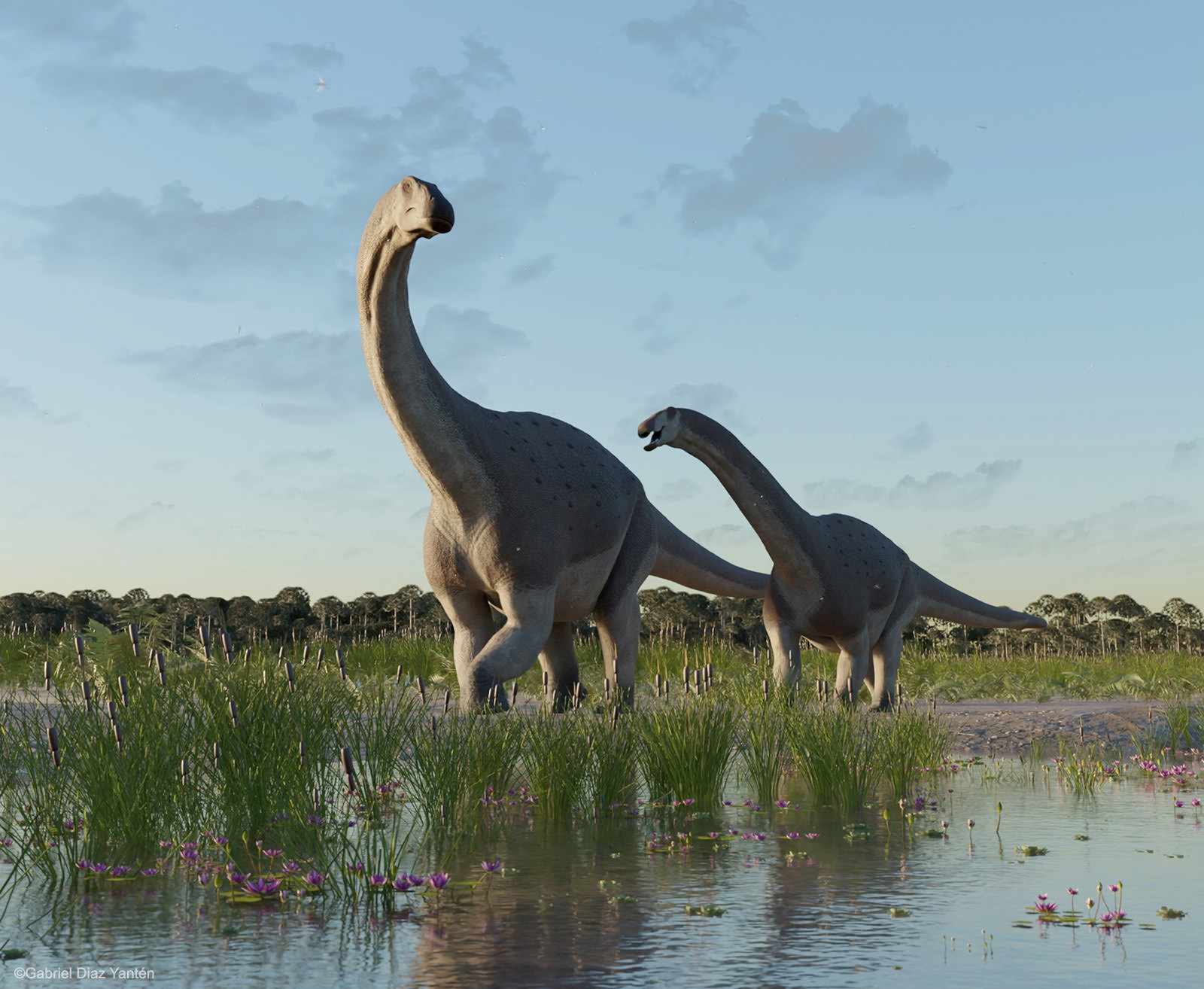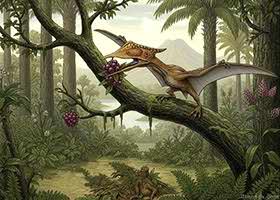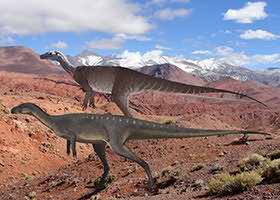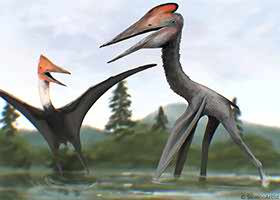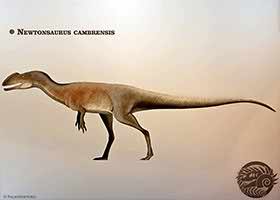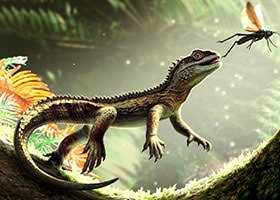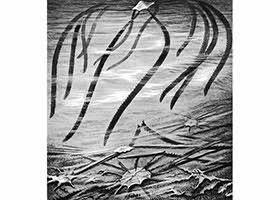
Devonian tetrapod trackways from Australia (Genoa River), Ireland (Valentia Island), and Scotland (Tarbat Ness) represent crucial evidence of the global distribution and diversity of early tetrapods. These finds complement the Polish discoveries at Zachełmie, painting a more complete picture of the terrestrial colonization event and highlighting the adaptability of these early vertebrates to different environments. They provide valuable insights into the locomotion, behavior, and ecological niches of early tetrapods. This allows for a better understanding of the evolutionary changes and adaptations that enabled tetrapods to successfully transition from aquatic to terrestrial habitats.

Genoa River, Australia
Discovery of the Tracks
In 1971, a local resident named Norman Wakefield stumbled upon three Devonian tetrapod trackways in the bed of the Genoa River in eastern Victoria. The tracks were described in the publication Trackways of Tetrapod Vertebrates from the Upper Devonian of Victoria, Australia. Warren & Wakefield, 1972.
The length of the main track was 1.1 meters, and the width of the footprints was 3.5 cm. The creature that left them was approximately 55 cm long.
Site Location
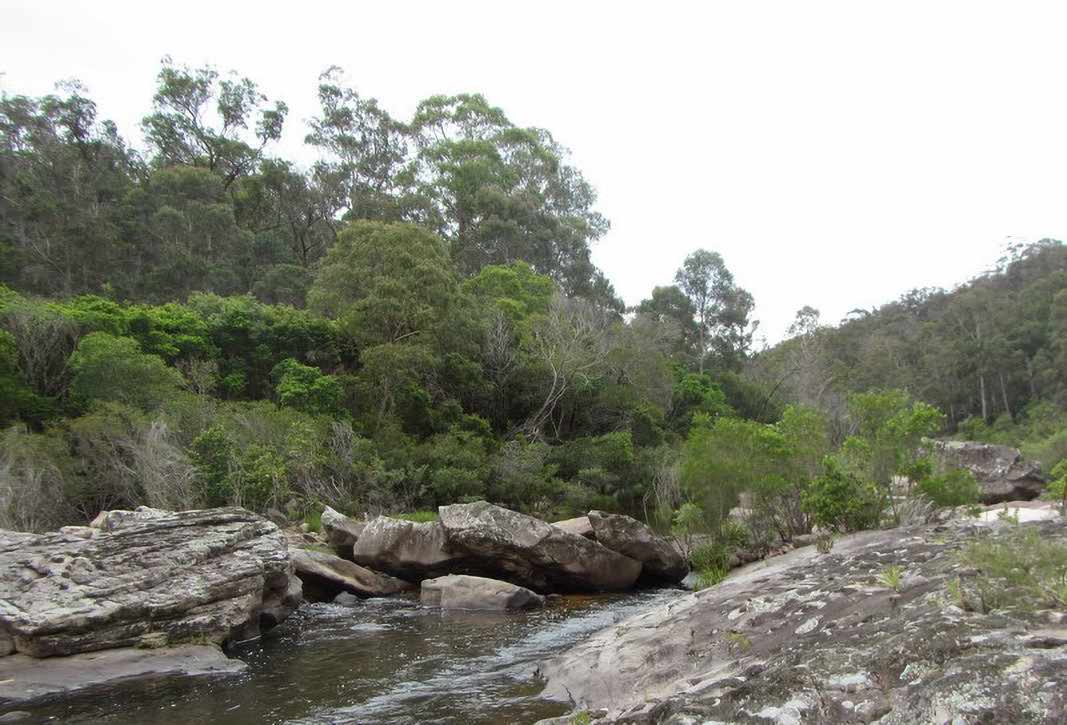
The first described Devonian tetrapod trackways come from the bed of the Genoa River in New South Wales, Australia. They are located in the upper gorge of the Genoa River, in the layers of the Combyingbar Formation from the early Late Devonian (Frasnian). Among other known footprints, the Genoa River tracks are the most convincing and accurately identified as Devonian tetrapod trackways.
The Genoa River flows through two states—New South Wales and Victoria—so both place names may appear in various sources.
The Genoa River Beds site is located in a picturesque area within Coopracambra National Park in the far eastern part of Victoria. This is approximately 50 km northwest of Mallacoota Inlet.
Geological Setting and Age of the Site
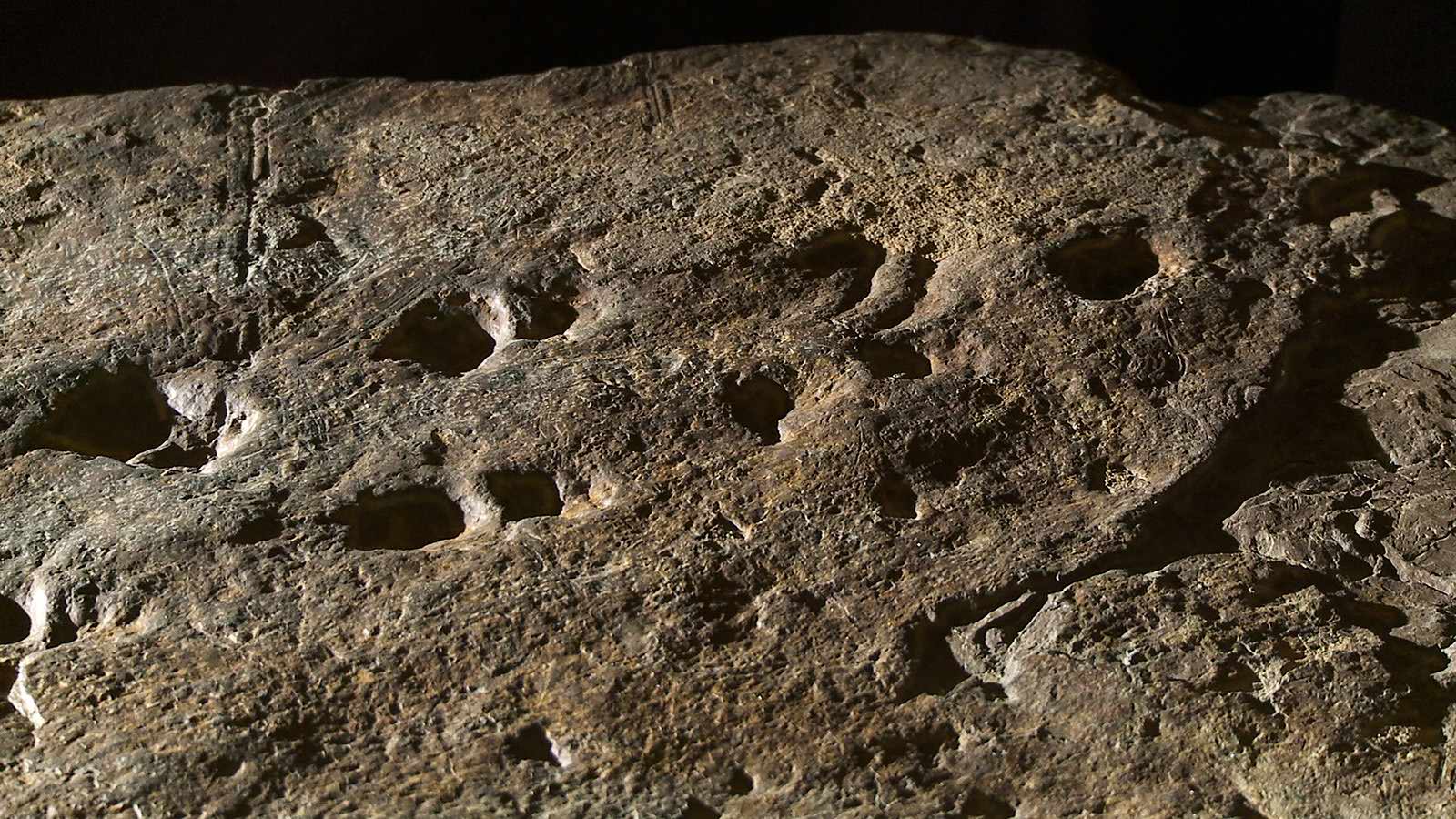
The Genoa River cuts through deposits of an ancient freshwater lake. During the Late Devonian period, flooding and sedimentation covered and preserved not only primitive plants but also tetrapod tracks.
The area with the trackway on the Genoa River is located in the proximal part of the Combyingbar Formation, which consists of non-marine fluvial deposits, primarily sandstones. The area contains very few fossils. But researchers discovered a single large jaw of a tetrapodomorph fish near the site where they found the track (Holland, 2010).
The Genoa River Formation is a very fine-grained, purple-brown non-marine sandstone. The deposits also include shale, argillite, and conglomerates.
Warren and Wakefield (1972), based on the fossilized fern-like plants within the layer and the stratigraphic relationships, dated the Genoa River deposits as “probably Frasnian.” Young (2007) more confidently identified them as Frasnian strata. Thus, their likely age is 372–383 million years.
Track Characteristics
Fine-grained purple-red rock preserved these small Devonian tetrapod trackways. There is no doubt tetrapods created them, despite their many differences. The second track is smaller and less well preserved, showing traces of belly or tail dragging. A third track, though mentioned, lacks depiction, and its attribution remains less certain. Each trackway contains four or more footprints.
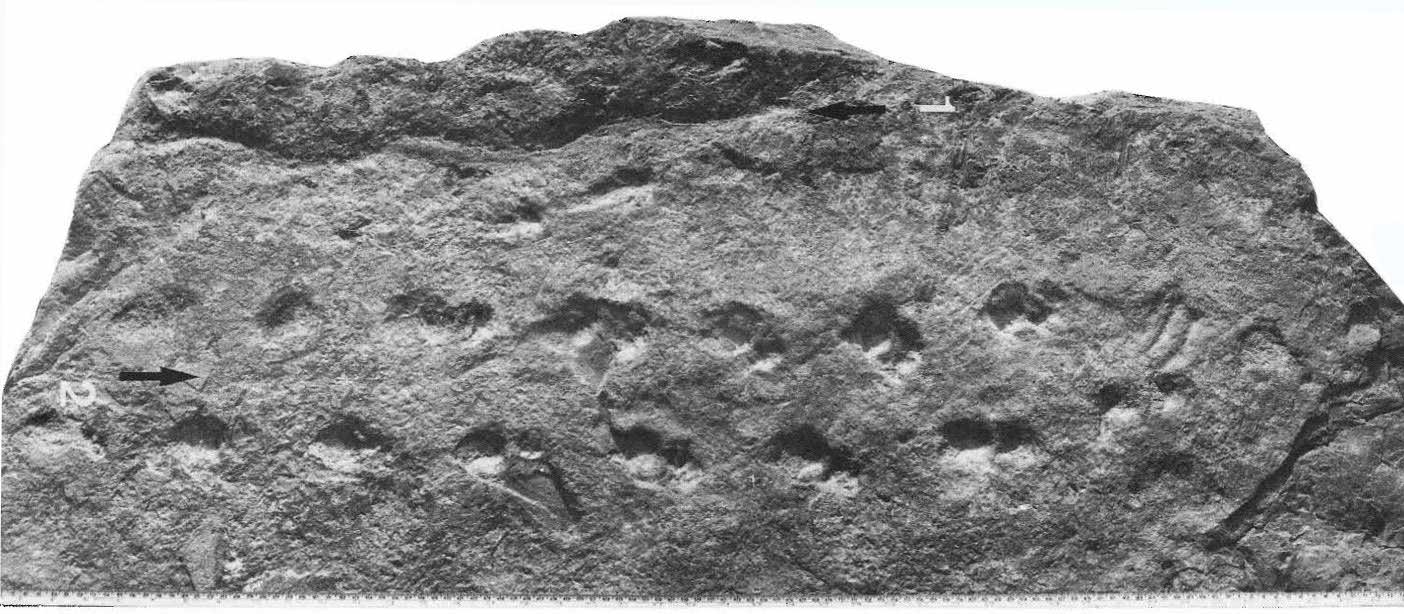
1: belly-drag trace, with the impressions of the tetrapod footprints alongside. 2: plantigrade broad tracks of a quadruped; stride short; marginal overlap. Arrows indicate the direction of movement. Graphic scale in cm and inches. © Dr. Jim W. Warren.
Some tracks contain micaceous sandstone. Erosion has removed part of the tracks, while sand accumulations and lichens obscure the remaining areas.
The first two Devonian tetrapod trackways are located 8 centimeters apart. They represent the tracks of two different species of animals.
These trackways exhibit alternating patterns of footprints, differentiated in size between the manus (smaller) and pes (larger). One of the trackways preserves intersecting, broad, and short handprints, smaller than the footprints, whose length exceeds their width. In some tracks, distinct toe impressions are visible. Such hand and foot impressions feature no fewer than five short, blunt, laterally directed toe marks. In fact, there may be six or more.
Trackway I
Trackway I lacks any central impression from belly or tail dragging. It shows a series of overlapping manus and pes prints, arranged alternately along the left and right sides of the track. This alternating pattern of right and left prints is characteristic of quadrupedal tracks.
The handprints (manus) are broad and short, smaller than the footprints (pes). The length of the footprint exceeding its width. The footprint overlaps the handprint, which is also typical for many tetrapods. You can observe toe impressions in several tracks. In the best-preserved ones, no fewer than five short, blunt, laterally directed toe marks are visible. The most likely candidate for Trackway I is an animal like Tulerpeton.

In Trackway I, the toe impressions are arranged laterally, indicating that the hands and feet of the animal were positioned at right angles to the body. Therefore, there are no signs of supination (the orientation of the hands and feet forward for a power push during walking). Presumably, the humerus did not have a significant supinator process. The suggested movement resembles more of a paddle-like stroke.
Coarser sandstone still fills some of the prints, and careful preparation could allow a more precise determination of the number of toes. The presence of such infill supports the interpretation of these tracks as original footprints rather than undertracks. Undertracks refer to impressions formed due to the compression of sedimentary layers, later exposed by erosion or splitting of the strata.
The best-preserved pes print has a width of about 35 mm and a depth of about 5 mm, with a transverse width across the track of around 110 mm. According to calculations by Warren and Wakefield, the estimated glenoacetabular length of the animal (the actual body length excluding the tail and head) was about 220 mm, with a total length of around 550 mm. However, a later study of the tracks by Pridmore suggests two possible alternatives.
Trackway II
Trackway II runs parallel to Trackway I. In this trackway, a small handprint alternates with a larger footprint, which clearly shows a dragging mark. The more obscure Trackway II has an additional feature in the form of a distinct, sinuous depression down the center, believed to represent a tail or belly drag mark.
The prints of the manus and pes alternate both across and along the trackway. While they remain well separated, they do not exhibit sharp definition. The distance between the prints across the track is 93 mm, and between each successive footprint, about 175 mm. It appears that the animal that left Trackway II was smaller than the one that made Trackway I.
Trackway III
The third trackway from the Genoa River site belongs to the same horizon as the first two but is located on a loose block. It shows a track more reminiscent of a “ladder,” with more irregular, separate footprints. Warren and Wakefield suggested that a tetrapod also made it.
Interpretation of the Tracks
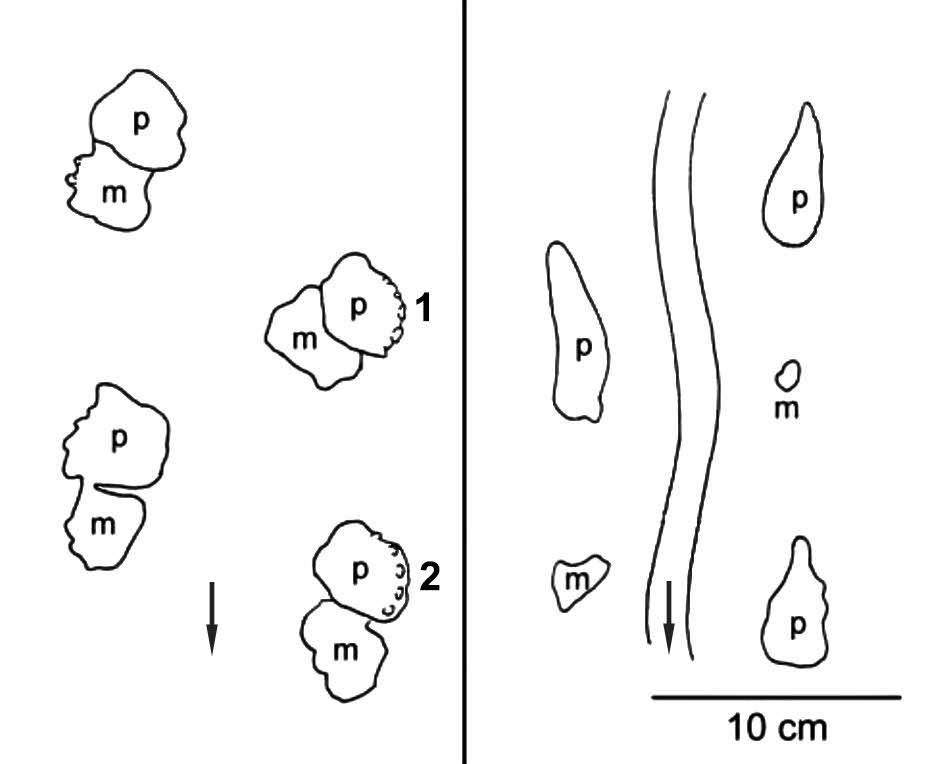
One of these Devonian tetrapod trackways clearly shows a central drag mark, while the other lacks such a central impression.
Clack believes that these two trackways differ significantly, and that tetrapods could have created them only underwater. Pridmore (1995) suggested that the same species of animal, moving at different speeds, created the two different tracks. Trackway I belongs to an animal that moved more slowly than the one associated with Trackway II.
However, in Trackway I, the pes (footprint) is positioned over and slightly ahead of the manus (handprint) on the same side of the trackway. Meanwhile, Trackway II shows the manus and pes on each side separated by half a stride length, so that the right footprint is opposite the left handprint, and vice versa. This could be due to either two animals with different body proportions or two animals with the same proportions but moving with different gaits and at different speeds.
Pridmore proposes that a faster-moving animal might have created Trackway II. He had a distance between its shoulder and pelvic girdles equal to twice the width of the trackway, approximately 186 mm.
Trackway I can be interpreted in several ways. The first is that a slower-moving animal, with a body length about 85% of the trackway width of Trackway II (i.e., 158 mm), made it. The second, less plausible option suggests that a longer animal, approximately 150% the length of the one that made Trackway II, created it. The third possibility is that the animal was similar in proportions to the one that made Trackway II but was using a lateral sequence walk (as seen in modern, slow-moving terrestrial quadrupeds).
Pridmore did not consider the possibility that animals partially or fully submerged in water could have created one or both of these tracks.
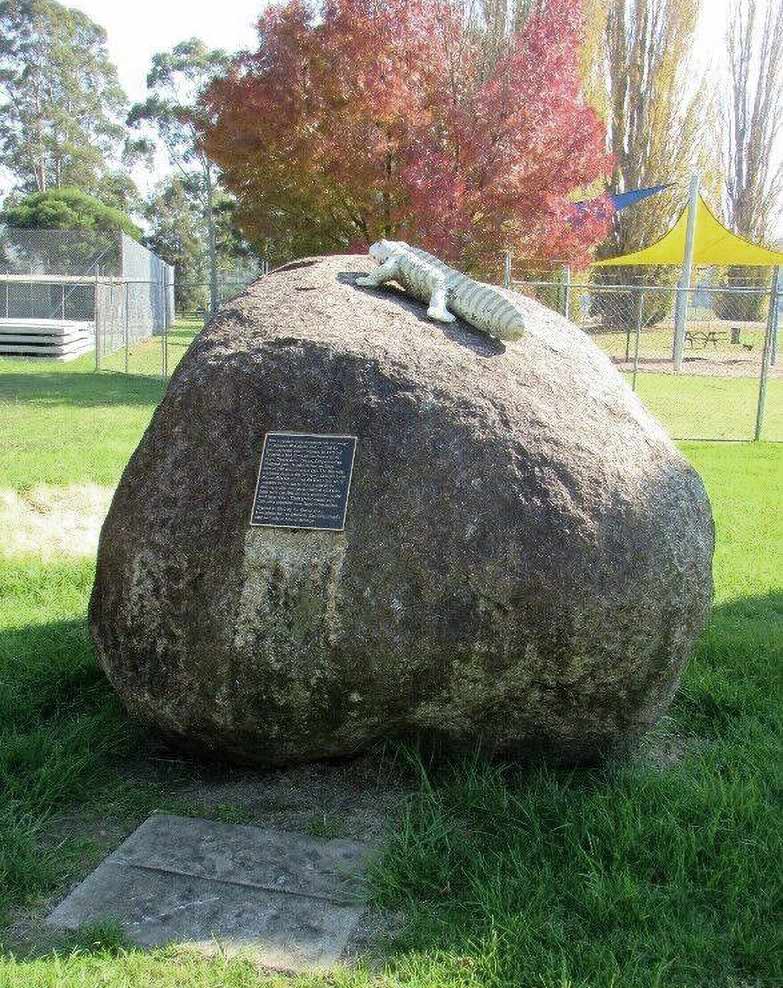
The memorial is dedicated to tetrapod tracks discovered by local resident Norman Wakefield. The memorial features a life-size sculpture of a tetrapod and footprints made from a cast at the discovery site at the base of the memorial.
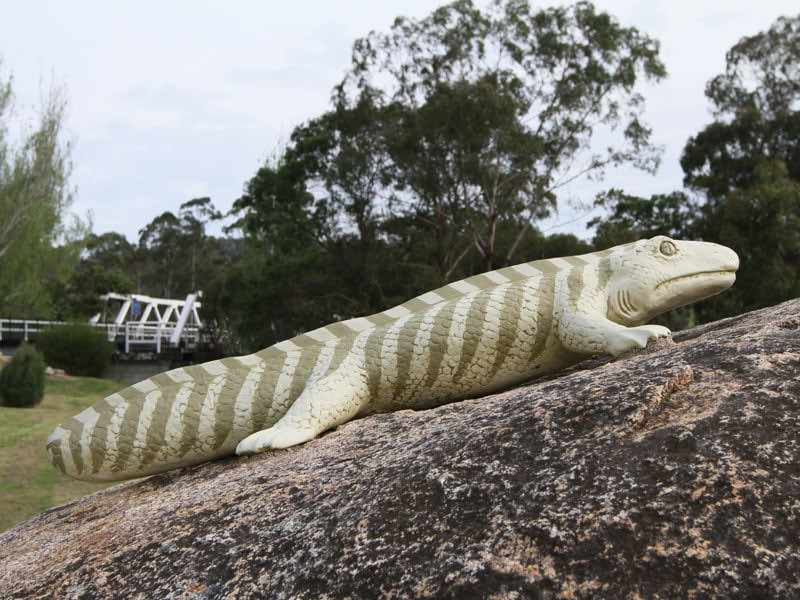
Conditions of Track Formation
The Genoa River tracks are Devonian tetrapod trackways made in non-marine conditions (Lucas, 2015). Associated mud cracks suggest that the tracks were imprinted subaerially, which likely rules out animals closely related to Acanthostega and Ichthyostega. A more probable candidate for the trackmaker is a tetrapod similar to Tulerpeton.
Other Finds at the Site

In the same stratigraphic plane, there are other trace fossils, some of which Warren and Wakefield speculated could be invertebrate tracks, although they did not provide details.
After the trackways were discovered, J.G. Douglas found a Late Devonian plant assemblage in the Genoa River beds, at roughly the same stratigraphic level as the trackways, about 850 meters away. The flora includes stems of sphenopsids and fragments of fern-like leaves, which W.S. Dun identified as Archaeopteris howittii.
Valentia Island, Ireland
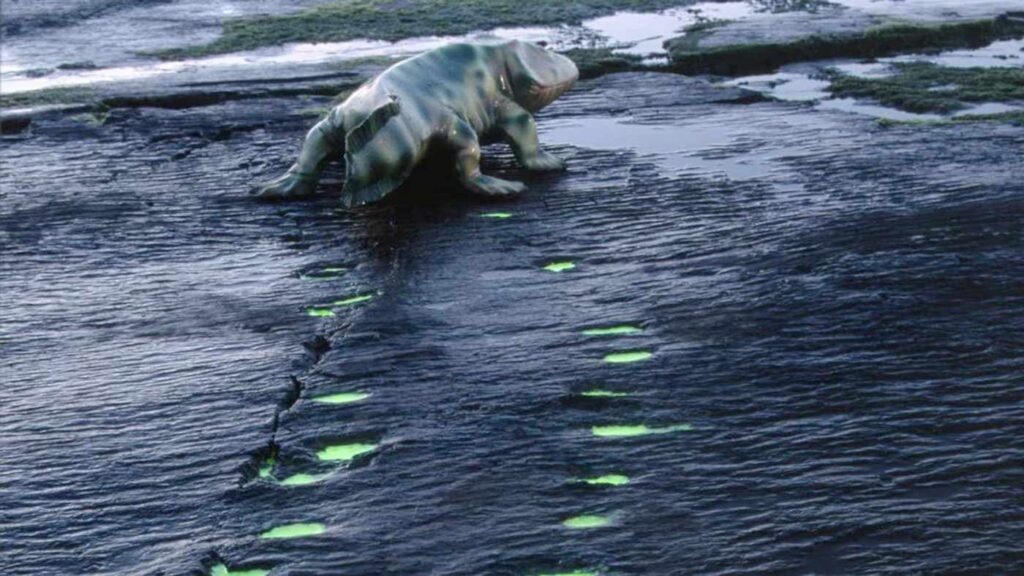
About 385 million years ago, a primitive amphibian shuffled along the muddy shoreline of Valentia Island, dragging its tail behind. As it crawled onto the shore, it left footprints that later fossilized, preserving them for hundreds of millions of years until today.
This creature was among the first to explore the earth, marking its path in the mud. These footprints tell a story of adventure and change, capturing the moment when life began to expand beyond the water’s edge and into a vast, uncharted territory of land.
In 1992, Swiss scientist Iwan Stössel from Zurich discovered numerous animal tracks along the coast of Valentia Island in Ireland. He scientifically demonstrated that these tracks, found in an area known as the “Rock of Hooves,” belonged to tetrapods. In September 2016, researchers uncovered new trackways and track sites.
Geographical Context and Environment
Devonian tetrapod trackways: Site Location

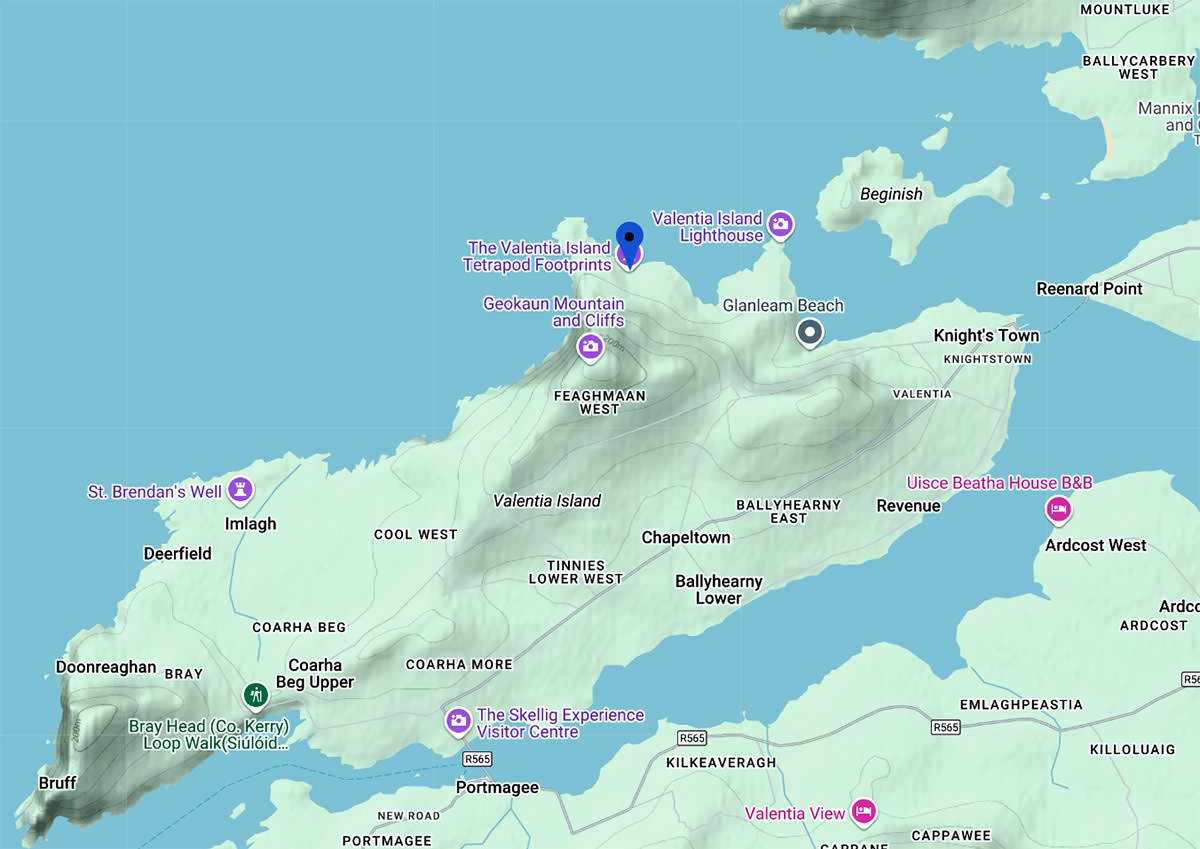
Researchers describe nine Devonian tetrapod trackways found in the continental Valentia Slate Formation along the northeastern coast of Valentia Island in Ireland. This site is located in Dohilla, County Kerry, near the Iveragh Peninsula on the Atlantic coast of southwestern Ireland.
During the Middle Devonian, the Valentia Island area lay in the southern part of the Old Red Sandstone continent, at least 200 km inland from the southeast Rheic Sea.
The tracks appear at three locations: Dohilla, Coosadillisk, and Culoo Head, with researchers documenting the latter two for the first time. Coosadillisk sits just 400 meters northwest of Dohilla, while Culoo Head lies 3.5 km southwest of Dohilla.
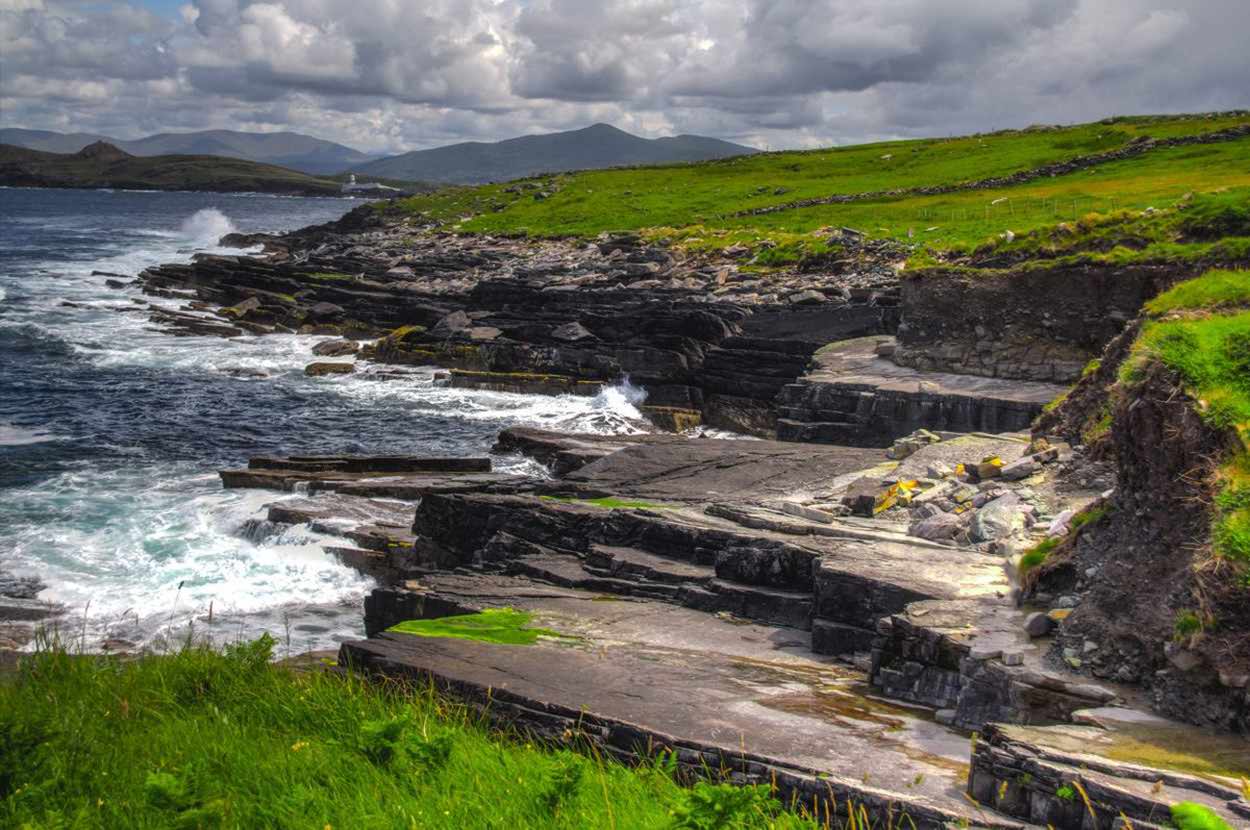
Paleoenvironment
In the overall arid landscape of the highlands, precipitation led to the formation of permanent streams that flowed southward, eventually disappearing into ephemeral floodplain channels. Tetrapod tracks appear primarily in sandy riverbeds and the directly adjacent environments, rather than in the fine-grained deposits of the lower floodplain. Some tracks originated in shallow water, while others clearly formed on land.
Tetrapods from Valentia Island inhabited marginal environments of proximal river channels, located less than 20 km from the northern edge of the Munster Basin, where internal watersheds likely provided reliable water sources in the generally semi-arid climate.1
Geological setting
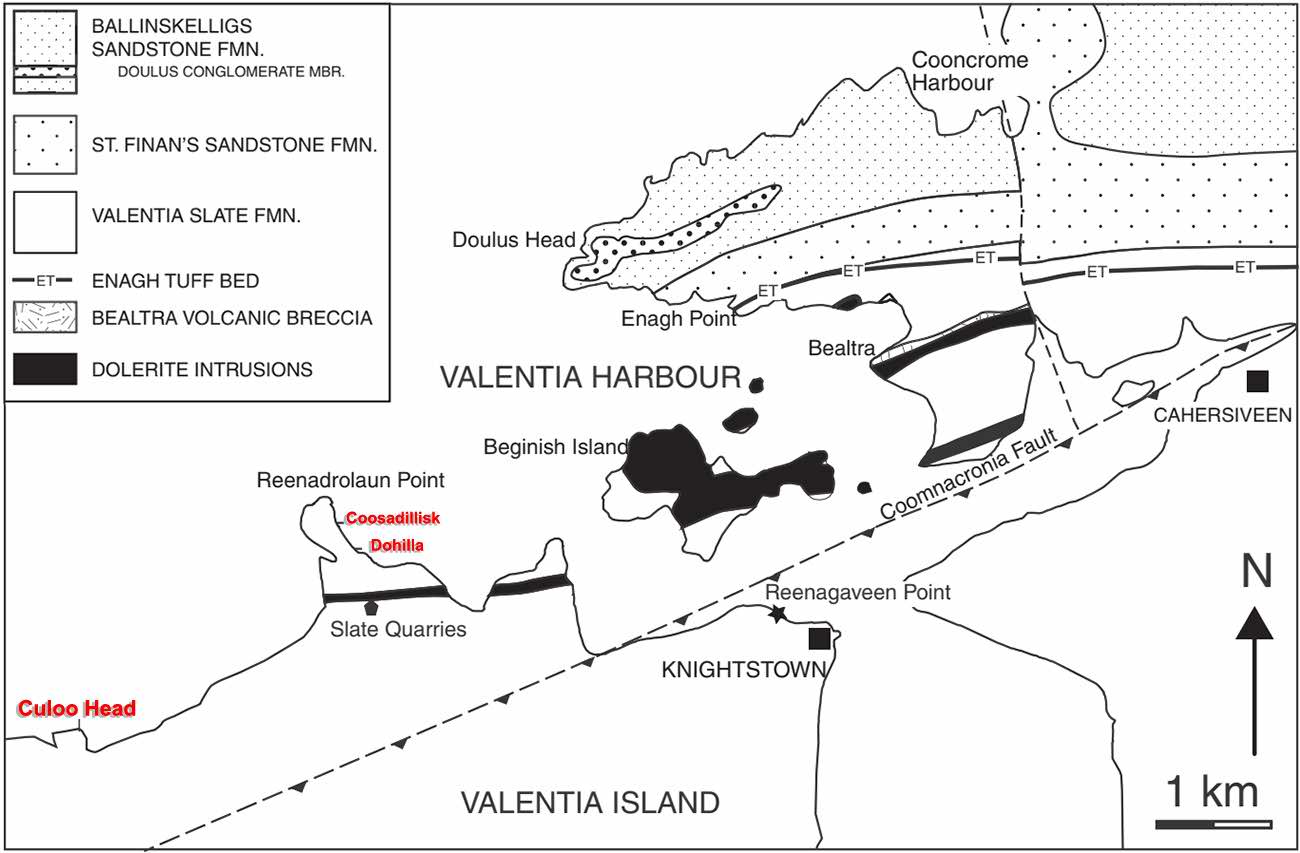
All three locations of Devonian tetrapod trackways correspond to the Valentia Slate Formation, which is part of the continental deposits of the Old Red Sandstone in the Mid to Late Devonian Munster Basin. The formation lies near the highland that forms its northern boundary.
The Valentia Slate Formation primarily consists of fine-grained purple and green sandstones and purplish-gray siltstones, interpreted as a fluvial environment. The characteristics of the footprints and the sandstone itself indicate that they remained unsaturated with water. Therefore, these tracks indicate evidence of fully terrestrial movement.
The Valentia Slate Formation also contains volcaniclastic deposits, which include two prominent felsic tuff beds: the Enagh Tuff Bed near Valentia Harbor and the Keel Tuff Bed in St. Finan’s Bay to the south. These horizons serve as important markers for geochronological dating.
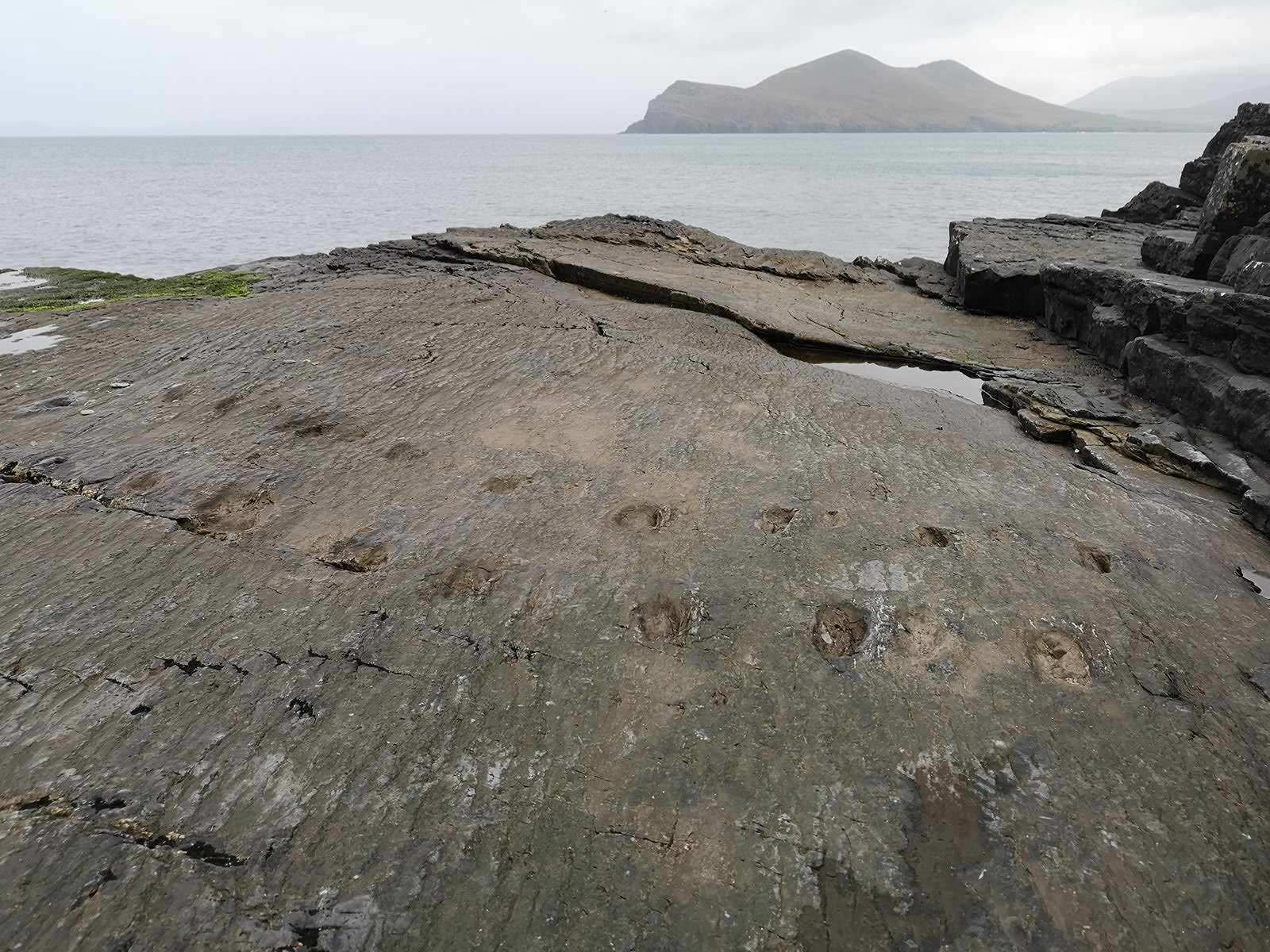
Age
Determining the age of the Valentia Slate Formation, where these tracks were found, proves challenging. Initially, Stössel proposed a range between the Middle and Late Devonian. The biostratigraphy of the interval containing the tracks, which relied on fish and microspores, suggested this age, although it lacked precision.
The Keel Tuff and Enagh Tuff layers, formed from volcanic ash deposition, lie stratigraphically about 230 meters above the tracks. According to high-precision radiometric uranium-lead (U-Pb) dating of the volcanic zircons, both layers are at least 385 million years old (Williams et al., 1997, 2000). This corresponds to the Middle Devonian period (Givetian) and is 5 million years later than the Zachełmie tracks, suggesting an earlier origin for tetrapods than indicated by the fossil record.
Thus, the tracks suggest that the origin of tetrapods dates back to the Middle Devonian or an earlier period.
Interestingly, the Valentia Slate is only slightly older than the Late Devonian (Givetian) Gauja Formation, which marks the first appearance of Panderichthys in the Baltic megadelta, signifying the beginning of the fossil record of elpistostegids.
Characteristics of Devonian Tetrapod Trackways
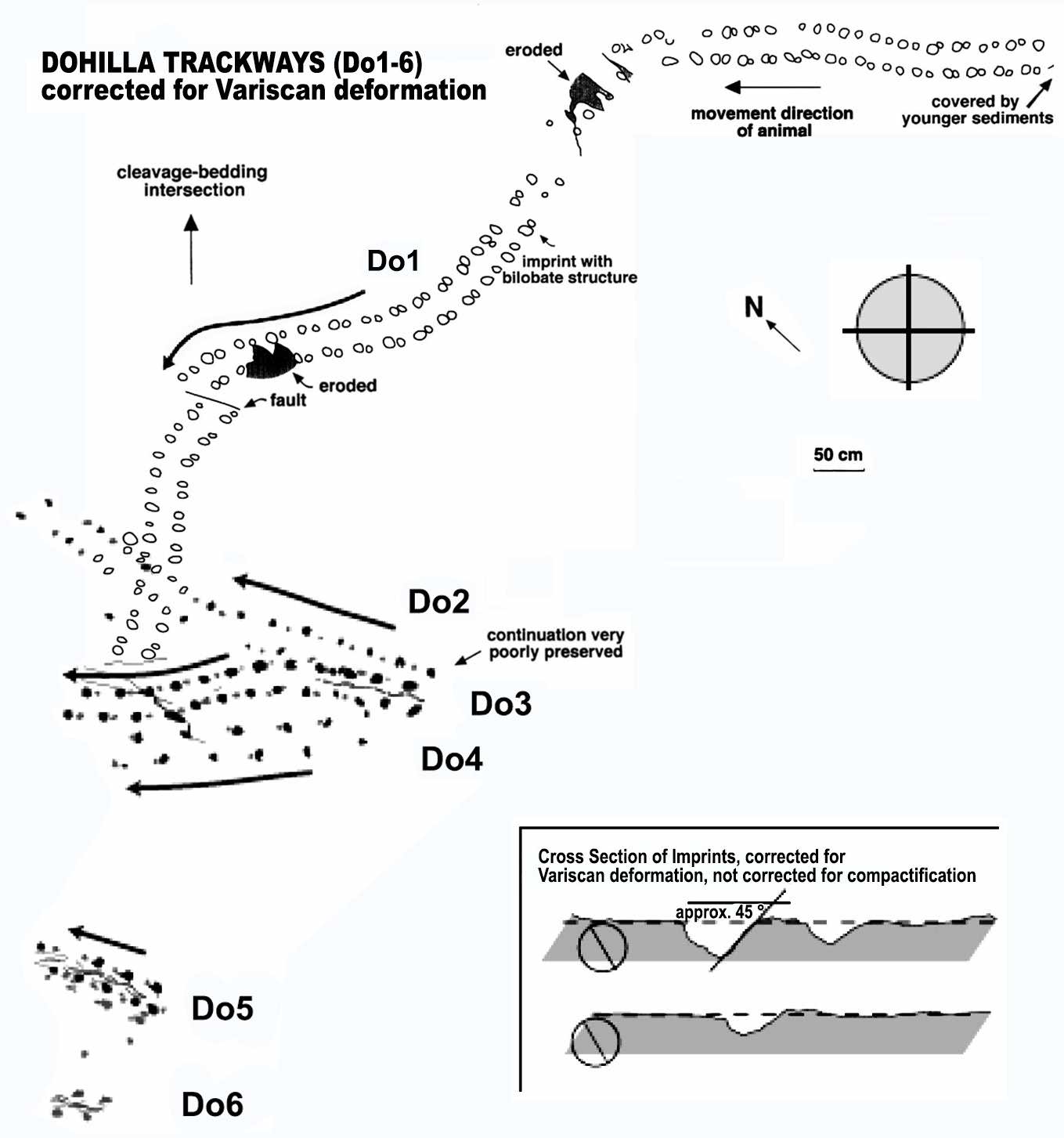
A total of nine Devonian tetrapod trackways have been discovered from three sites. The main site in Dohilla contains six trackways, comprising a total of 280 footprints, oriented with their long axes perpendicular to the direction of movement.
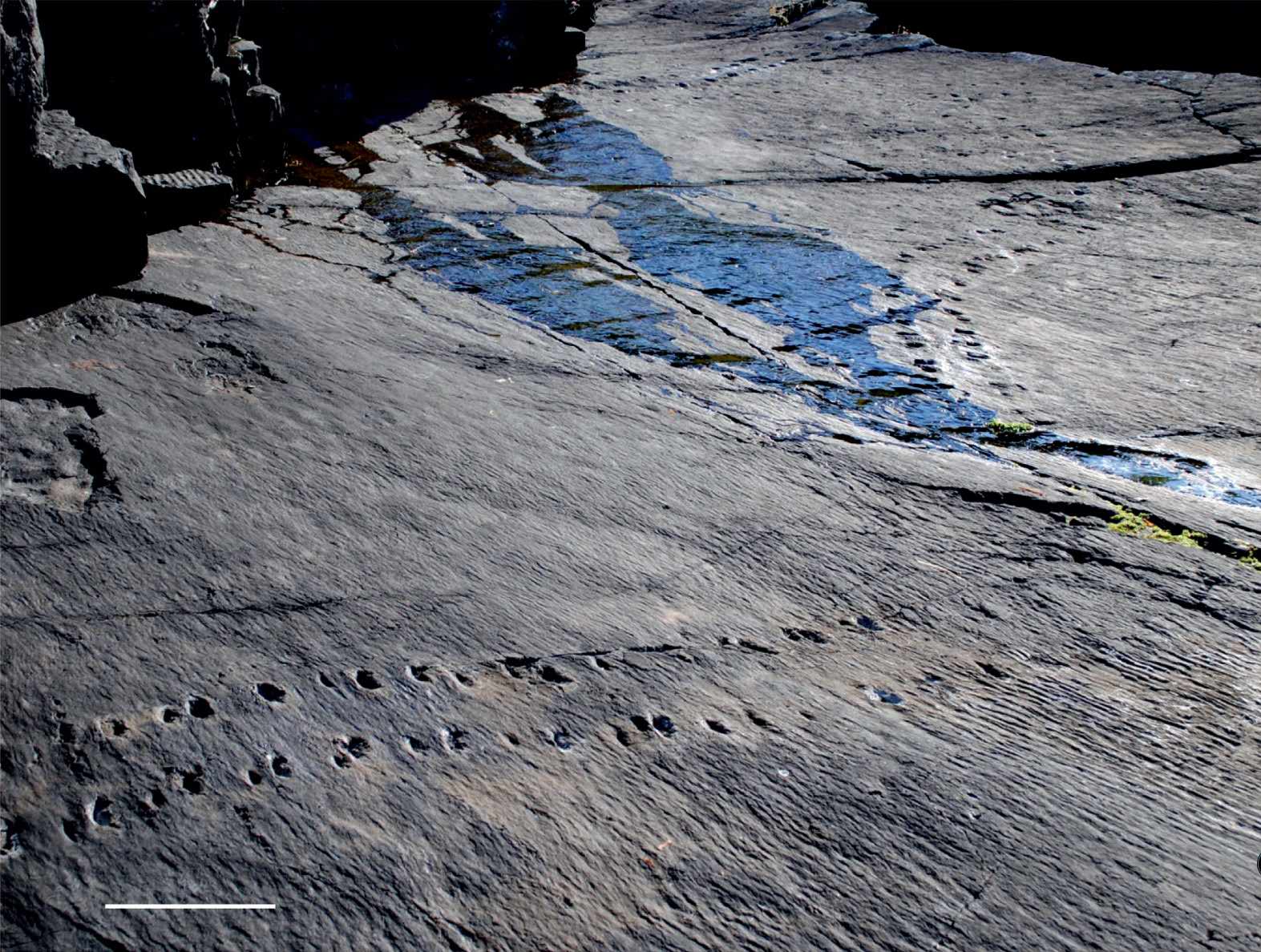
The footprints have a rounded or oval shape, reaching a diameter of 15 cm and a depth of 2.5 cm. The longest trackway, Do1, measures nearly 10 meters in length and has a winding character. Another, shorter sequence of footprints, Do2, crosses it and appears to have formed after the first. Additionally, four more short trackways connect to these.
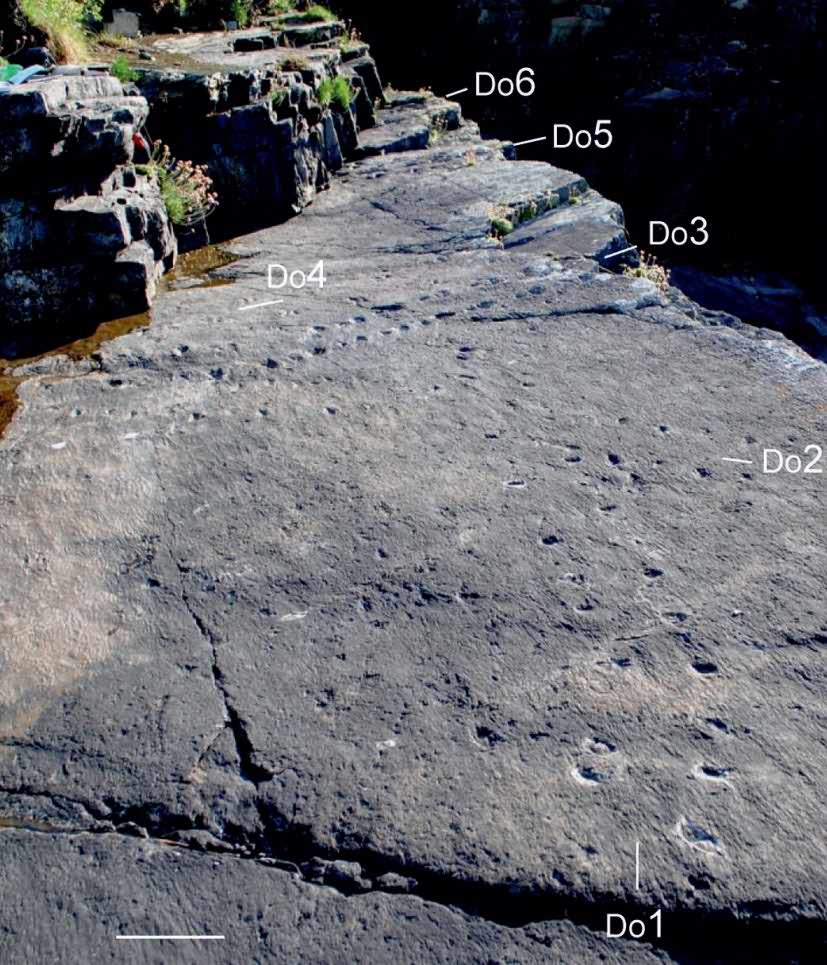
Most trackways are partially eroded or tectonically deformed, but they have preserved enough detail to be identified as ichnorecords of early tetrapods.
Due to deformation and erosion, some footprints are incomplete, and the morphological details of individual tracks have not survived because of the fracturing of the deposits. The tracks underwent significant deformation during the Variscan (Hercynian) orogeny, as indicated by the variation in stride, pace, and width of pace in the trackway.2
The footprints of each trackway, which form pairs in parallel rows, vary in size. This difference likely occurs because the front limbs created the smaller depressions, while the hind limbs produced the larger ones. The systematic pairing of the footprints, with widely spaced feet relative to each other, indicates that all the animals had lateral limb placement, and their mode of movement resembled that of modern tailed amphibians or reptiles. One explanation for the absence of toe prints suggests that the hands and feet had well-developed webbing.
Direction and Speed of Movement
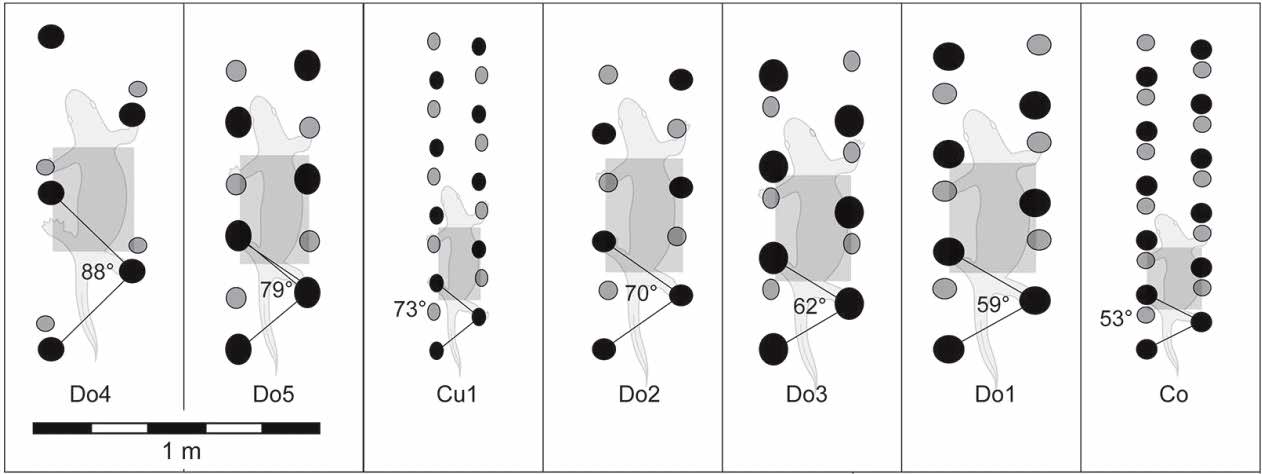
Studying the trackways at Dohilla revealed that the animals moved roughly in one direction, from the northeast to the southwest. Researchers determined the direction by examining which part of the footprint was deeper—the front or back—since there were no toe prints. The greatest depth of the track typically corresponds to the part facing the direction of movement, as this area bears the most weight during locomotion.
Tetrapods hardly changed their speed of movement, as indicated by the stride length. Variations in the depth of footprints within a single trackway result from changes in ground conditions along the animals’ path. The deepest impressions appeared on wetter, more plastic sandy soil, while shallower ones formed on drier, looser ground.
Signs of Body or Tail Dragging
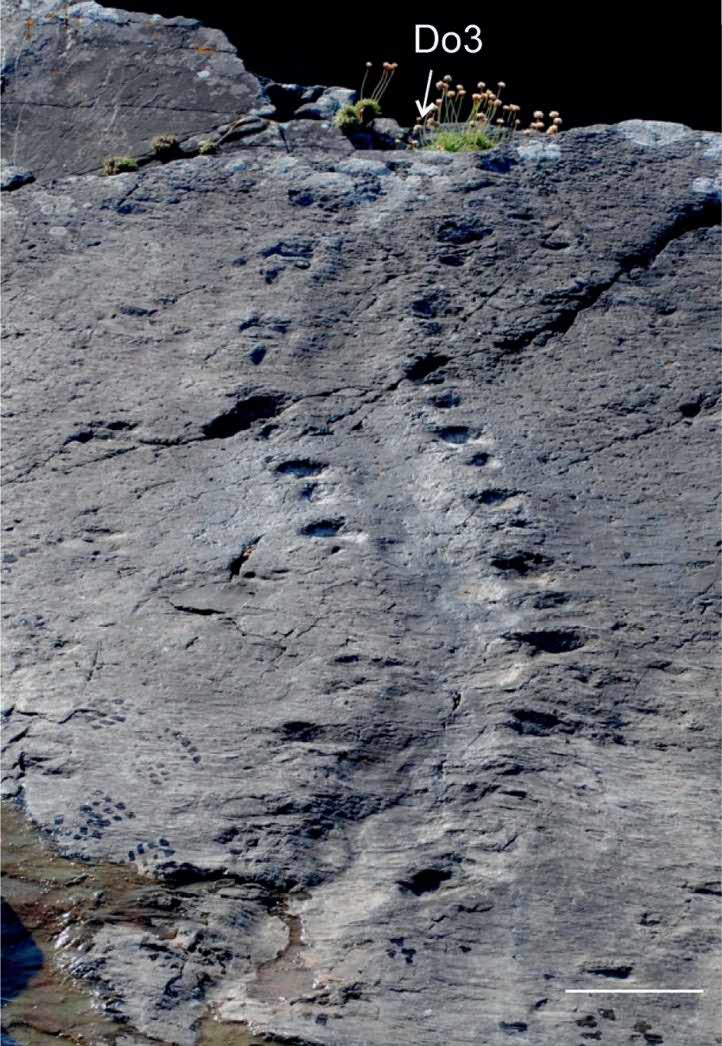
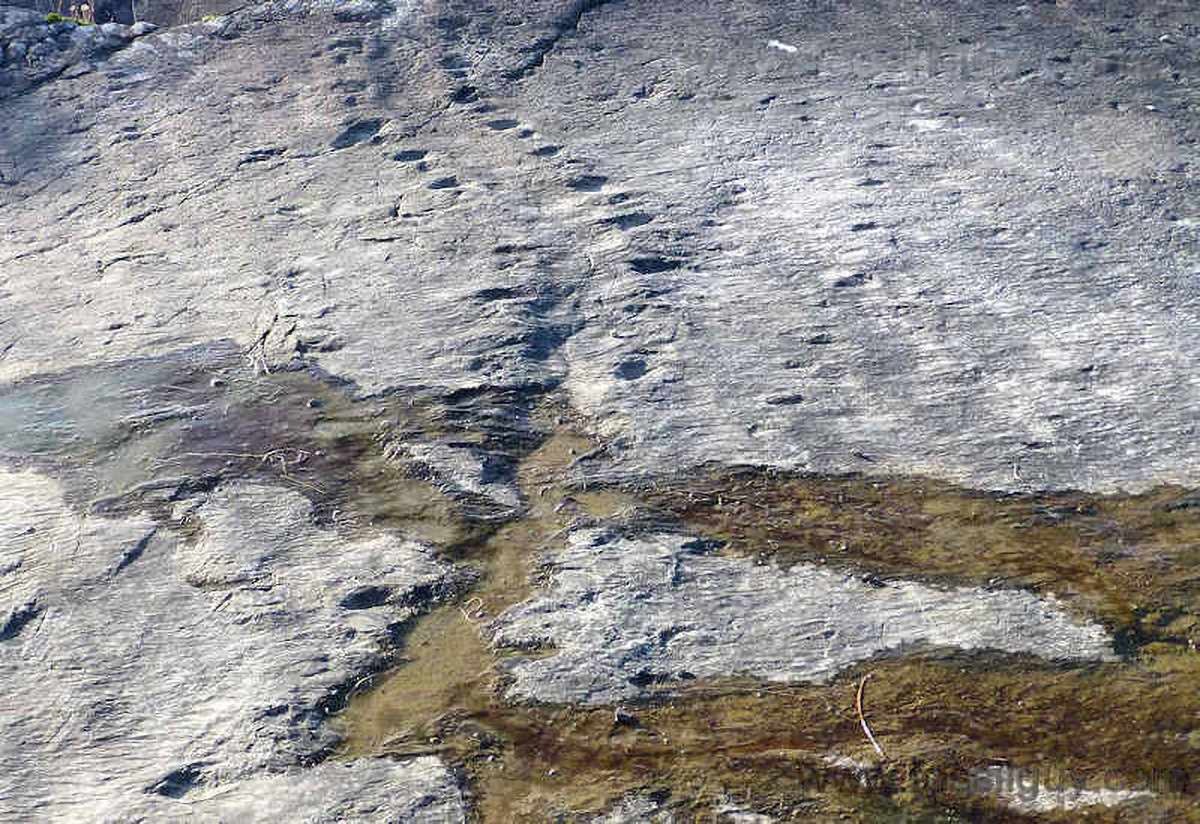
Half of the Dohilla trackways (Do3, Do5, and Do6) feature a central, shallow, and wide groove, likely created by a dragging tail or belly, suggesting movement on land. In water, where buoyancy helped lift the body above the substrate, animals only touched the bottom with their feet.
Some trackways show no clear signs of body or tail dragging. The central groove and wavy furrow seen at the beginning of one footprint, interpreted as signs of tail and body dragging (see Stössel et al., 2016), may represent resting marks.
Trackway Do1
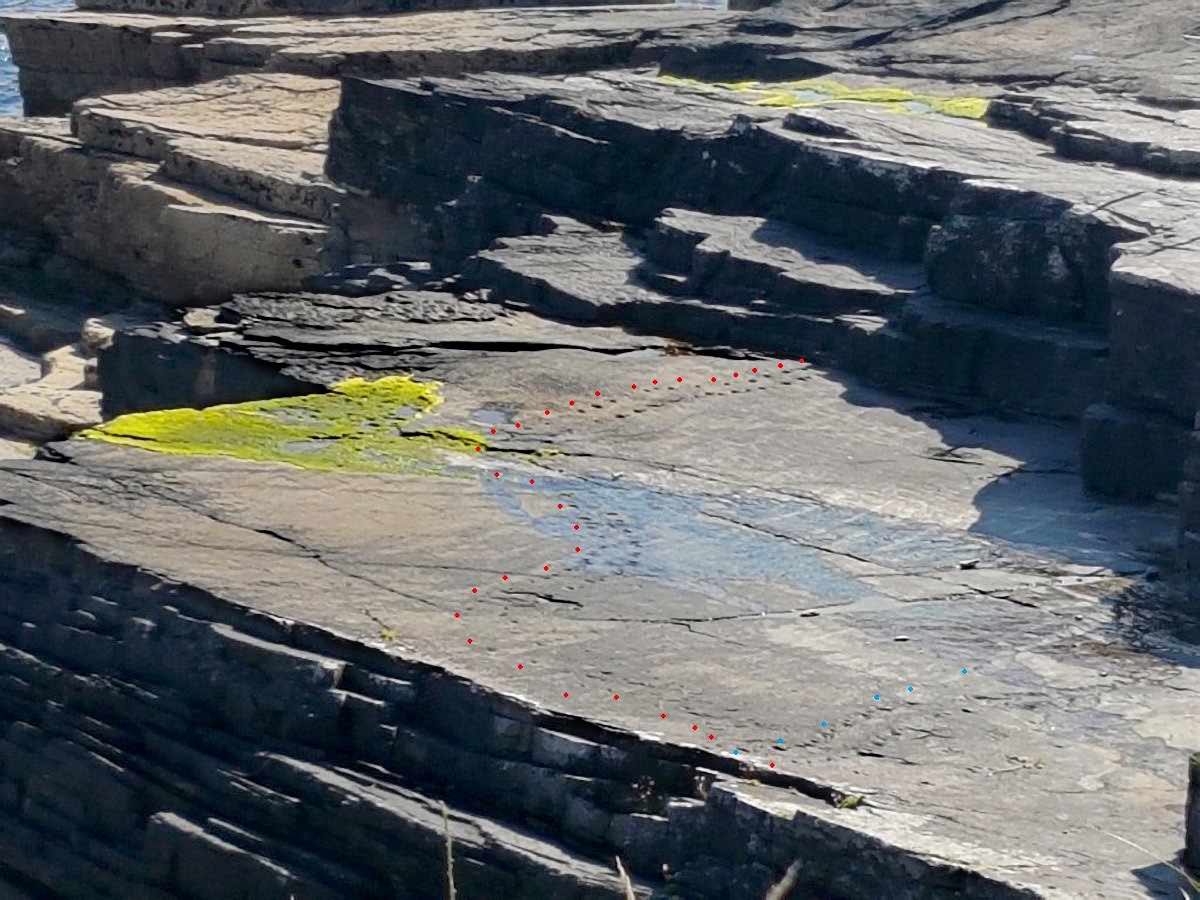
The most impressive trackway is Do1 (Dohilla 1), which lacks central impressions of body or tail dragging. It lies along a long, winding path that stretches approximately 10 meters (some sources suggest 15 meters). This unique trail contains the longest trackways ever discovered among early tetrapods.
The trackway preserved in fine-grained sandstone includes 145 footprints with parallel orientation of the left and right tracks.
This pathway shows both a differentiation in the sizes of manus and pes impressions and an alternating pattern of tracks typical for tetrapods. The footprints are wider than they are long, suggesting a polydactyl creator with laterally oriented fingers. The tracks demonstrate a clear lateral sequence of movement.
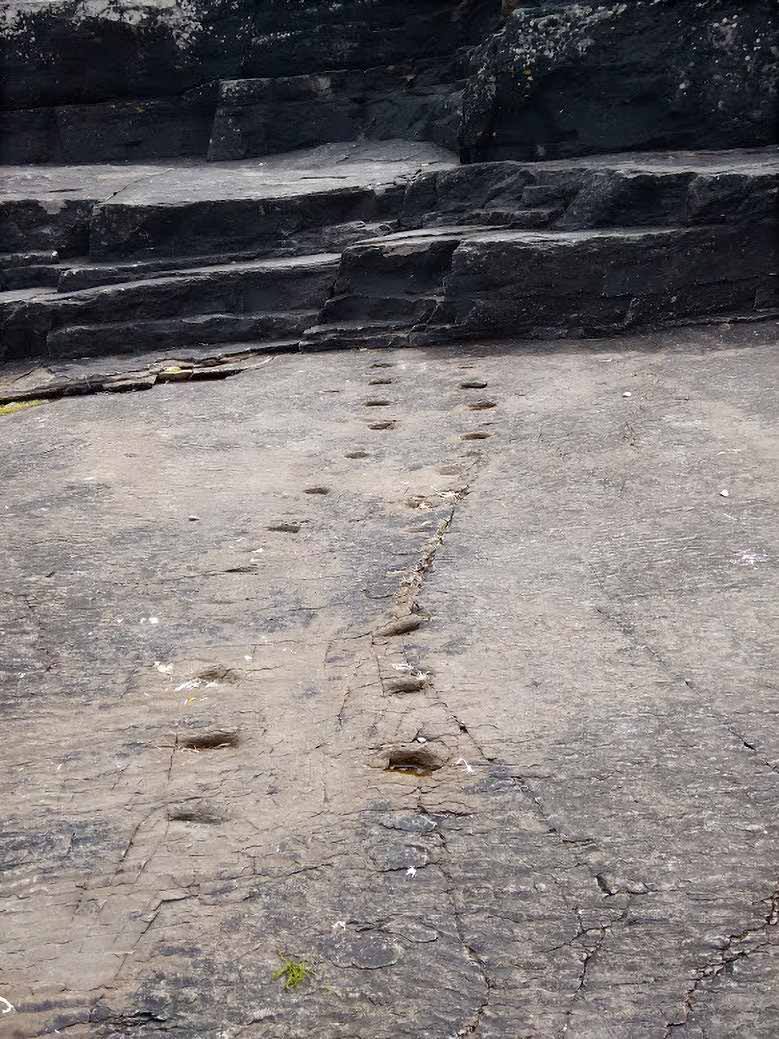
The trackway follows a winding trajectory across an almost horizontal, partially undulating deposition surface measuring about 7 by 10 meters. This surface forms the top layer of sandstone and siltstone about 2 cm thick. One end of the track shows erosion, while an overlying layer of sandstone obscures the other end. The impressions are concave, and many of them fill with sediments from the upper layer. The tracks reach a maximum depth of about 2 cm.
The details of the impressions have not preserved well. This trail displays two types of footprints: manus and pes, which differ in size and systematically alternate in pairs of smaller and larger tracks. The manus and pes impressions closely align but do not extend beyond their respective sides. This suggests that they represent hand and foot prints. Thus, the tracks are quite convincing as tetrapod traces.
Clack (1997) and Lucas (2015) also confirmed that these trails belong to tetrapods.
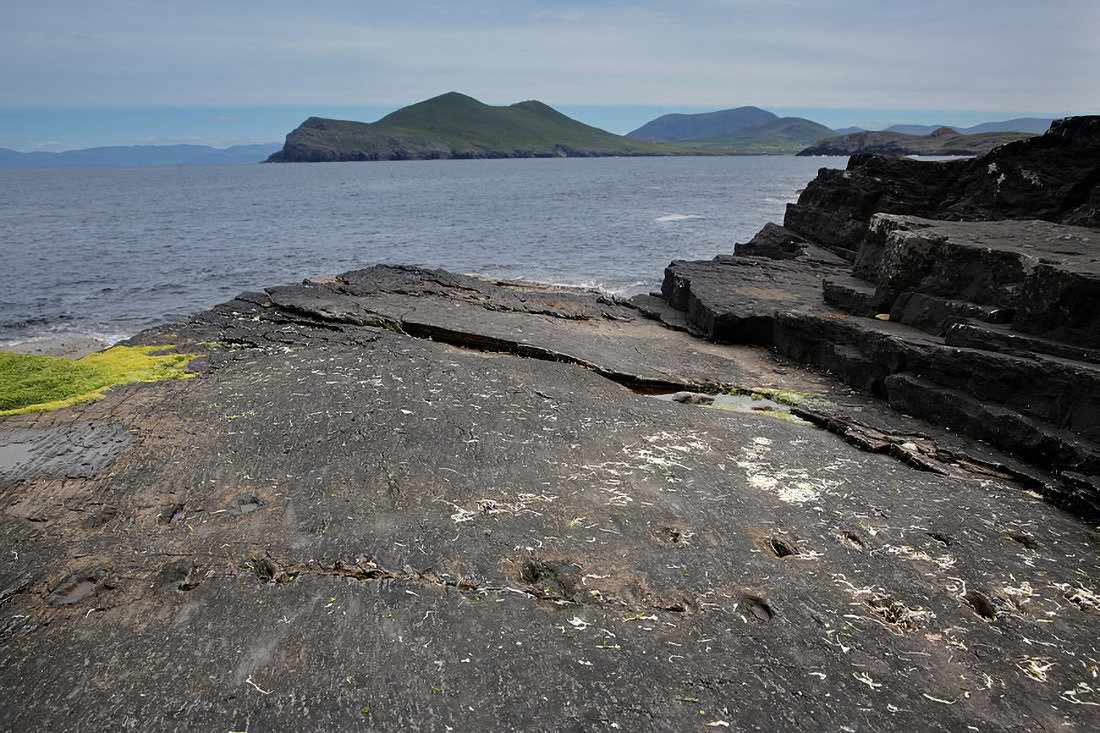
Other Findings of Devonian Tetrapod Trackways on Valentia Island
At first, researchers only recognized the Do1 trackway. A second track, although heavily weathered, was found nearby, suggesting the possibility of more tracks in the vicinity. A more detailed investigation of the stratification surface of the first find in 1994 revealed two new tracks, although they are not as extensive as the first discovery.
On other tracks in the same area, traces of tail and body dragging have remained. Therefore, these traces indicate fully terrestrial movement.
The tracks (Do3, Do5) formed in sediment that water nearly uncovered. The tracks Do2, Do4, and partially Do1 were underwater (sub-aqueous).
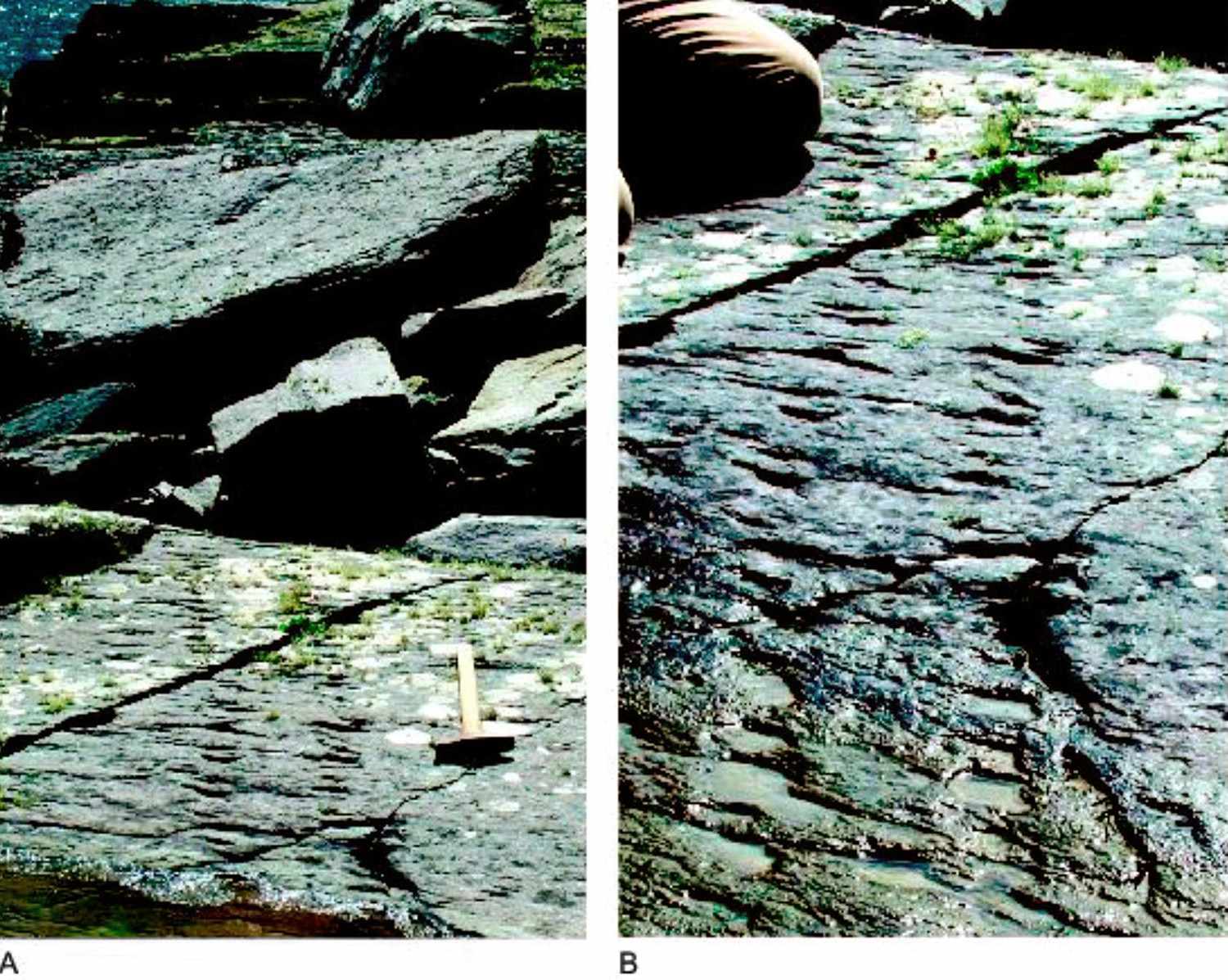
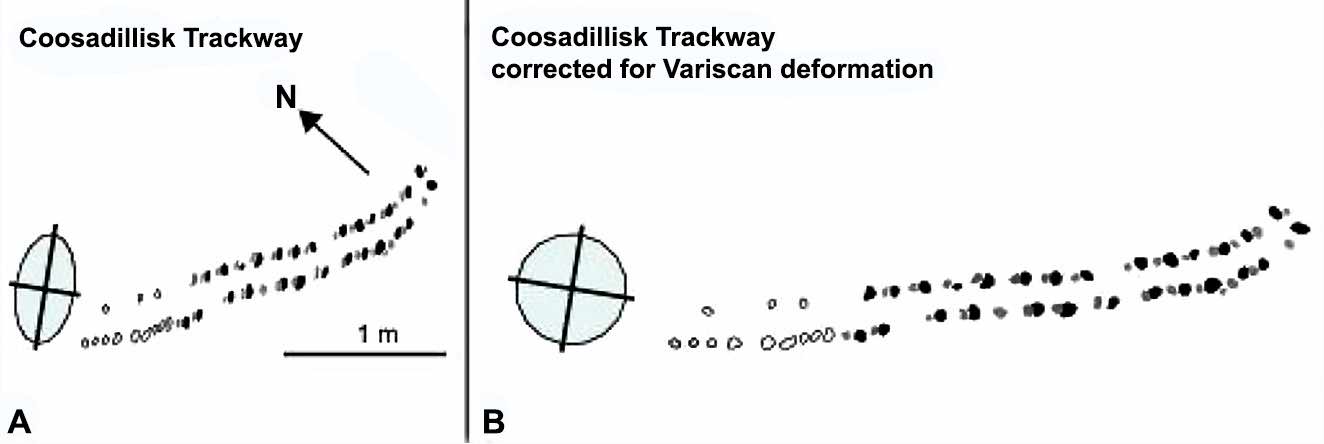
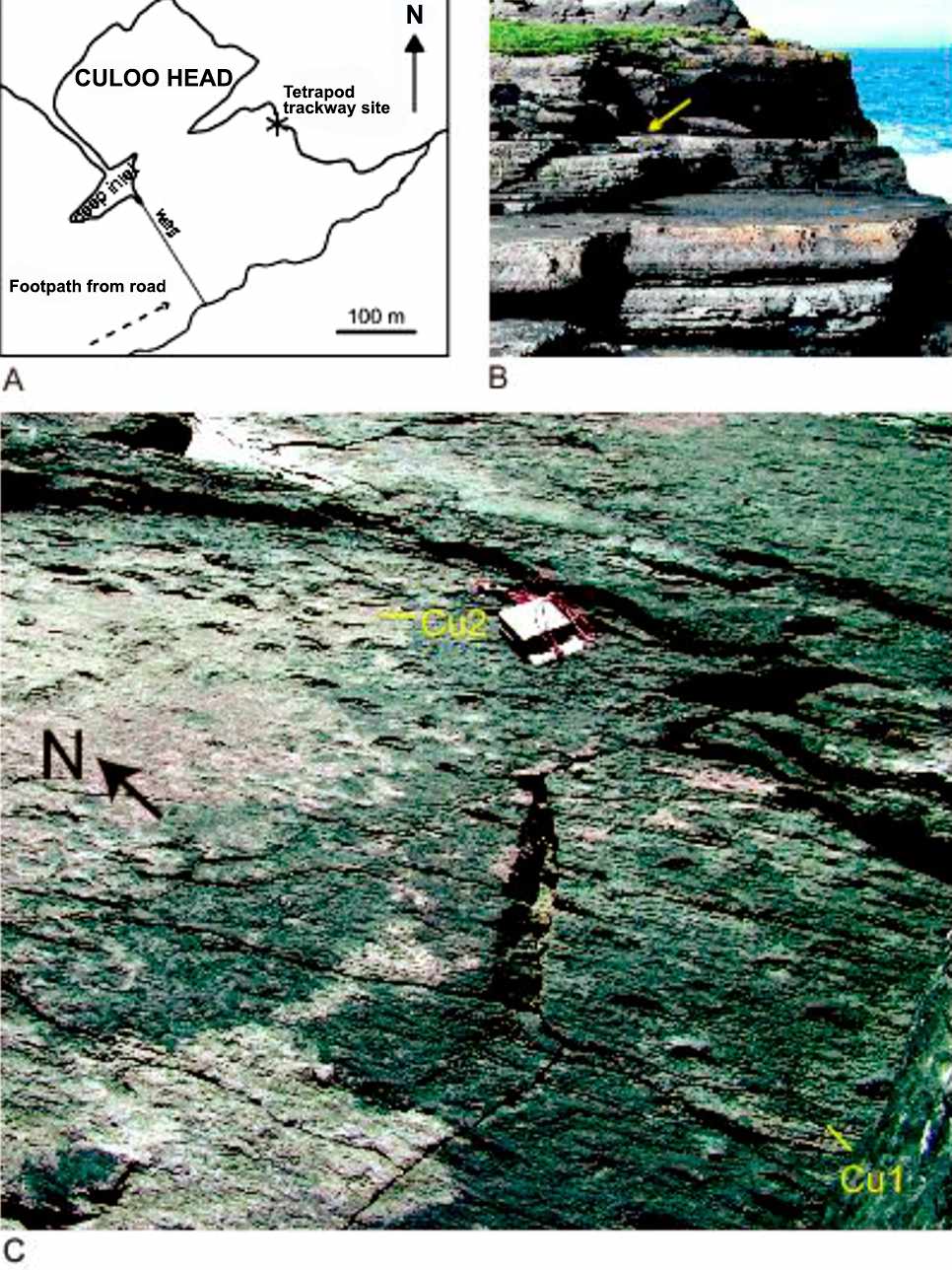
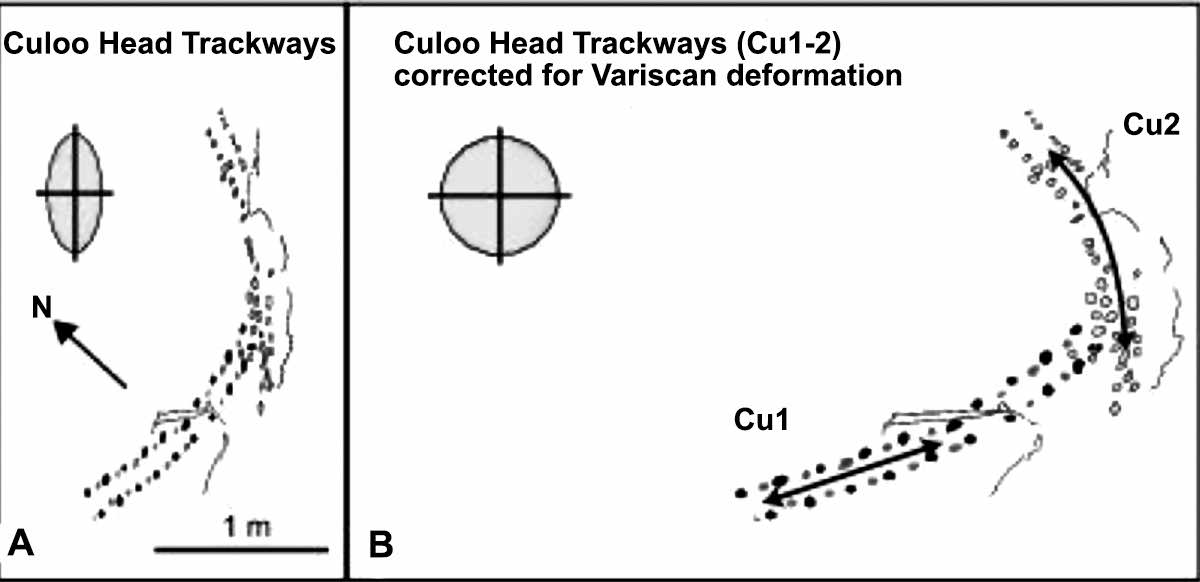
The Coosadillisk site contains a single trackway nearly 2.5 meters long. The Culoo Head site features two intersecting trackways. Both in Coosadillisk and Culoo Head, the footprints resemble those found in Dohilla in terms of morphology, differing only in size and their relative arrangement.
River Conditions
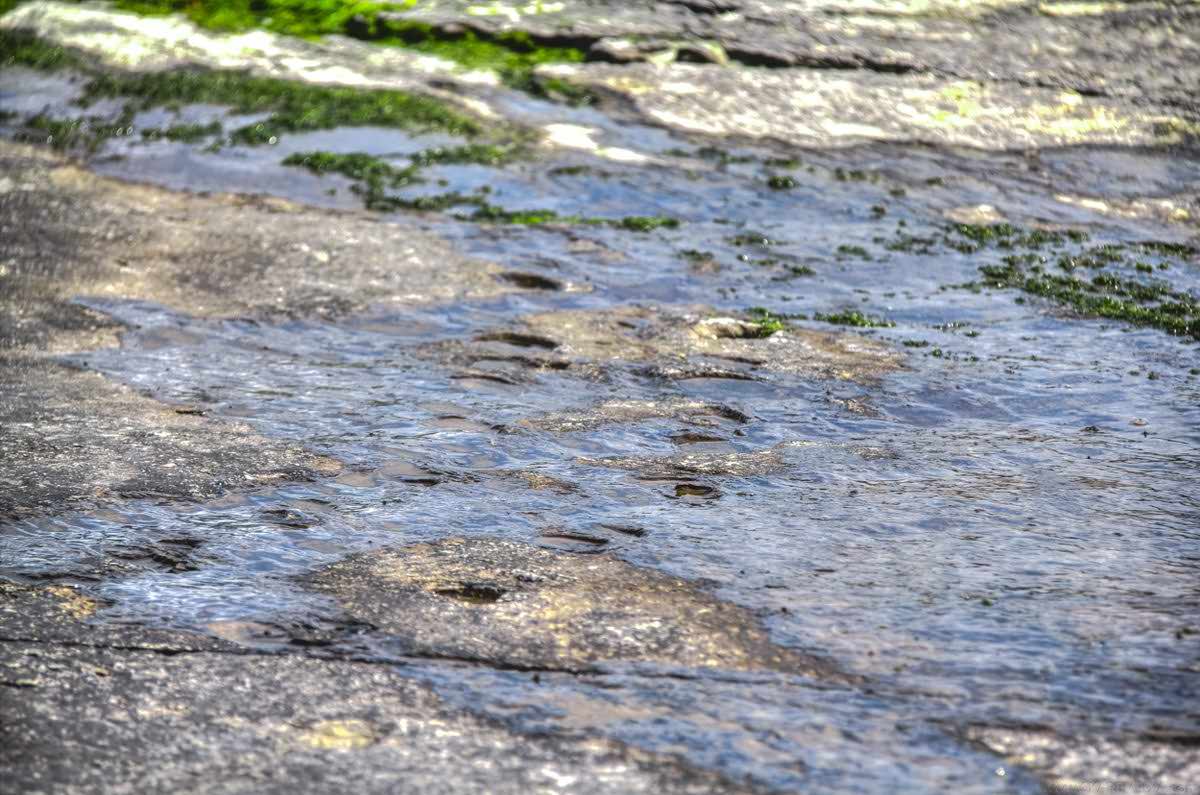
Stössel et al. (2016) confirmed that numerous tracks from the Middle Devonian (Givetian) horizon of the Valentia Slate Formation on Valentia Island appeared along riverbanks in freshwater conditions.
A trace is unlikely to have survived in fully saturated sediments with such grain size. Additionally, a floating animal would probably have left more undulating trace than this one. The sediments where the tracks were found formed from flood accumulations on a non-channel alluvial plain.
Stössel (1995) noted that the deposition of the track-bearing layer occurred in non-channel, bedded sediments of alluvial (non-marine) origin, casting doubt on whether the tracks were left underwater. Therefore, the trace maker likely was not a fully aquatic animal. It is more probable that it was a primitive amphibian inhabiting a riverine environment.3
Conditions for Trace Formation
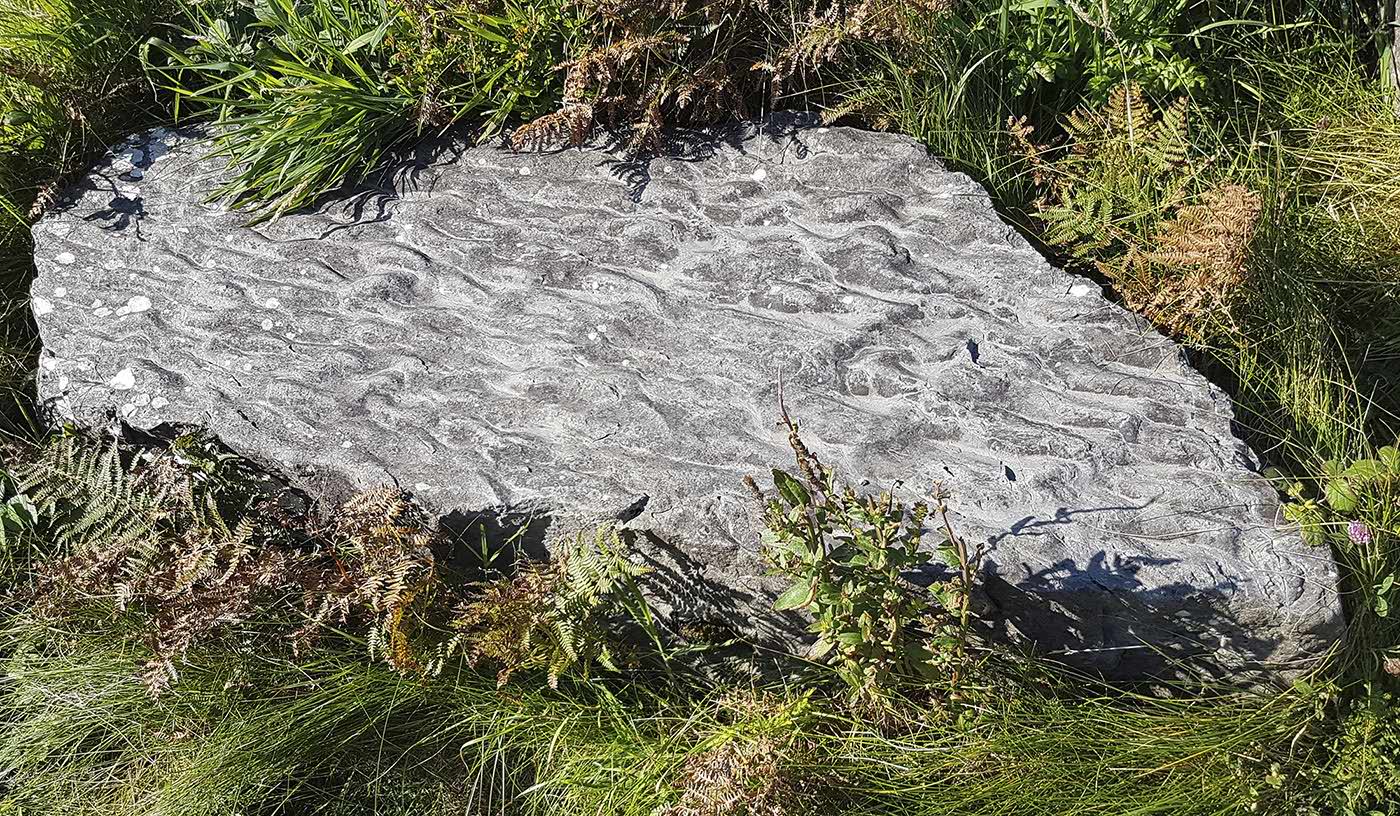
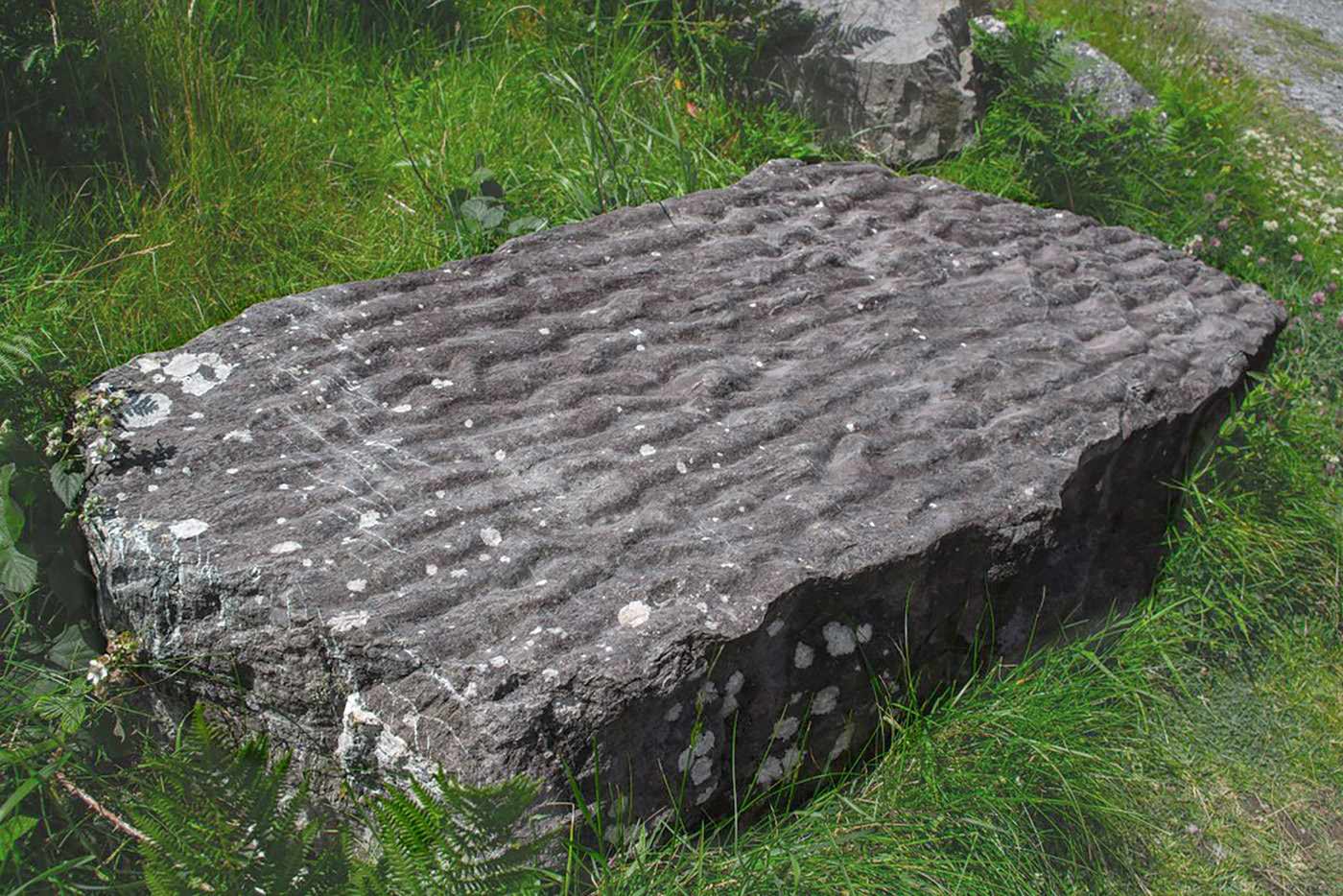
Studying the rocks with imprints and the tracks themselves revealed how the sites on Valentia formed. Animals moved across unstable river shallows. Initially, the entire area within the largest site at Dohilla was underwater, indicated by the ripples typical of shallow river depths.
Then the water level dropped, causing some areas to lose water entirely. Tetrapods walked across the shallow water. Afterward, the water level fell again, and the entire area became a shore with wet ground, where several more animals walked, dragging their bodies or tails. Finally, later on, the area was flooded again, and the tracks of the tetrapods, which had dried and hardened by that time (possibly with the help of cyanobacterial communities), quickly ended up beneath a layer of fine sand deposited by weak currents. This enabled the traces to remain preserved for hundreds of millions of years.
The tracks cross a rippled deposition surface, leaving a trace several meters long. Next, flooding covered the ground with silt. The traces experienced almost uniform distortion from the deformation of orogeny.
Animal and Track Sizes

Interpretation of Middle Devonian trackways on Valentia Island, Ireland, showing lateral sequence walking by a tetrapod with larger pes than manus. Reconstruction of the “ideal” trace. The drawing also attempts to show the animal’s gait and its likely size. Modified from Stössel et al., 2016.
The large number of tracks allows us to estimate the original dimensions of the track pattern: a stride of about 34 cm and a pace of approximately 35 cm. Judging by the size of the imprints and the distance between them, the gleno-acetabular length measured 38 cm.
If we assume that the tetrapod that created these tracks had proportions similar to those of Ichthyostega (which is clearly younger than these tracks), the maximum body length would be about 100 cm. This estimate is based on the size of individual imprints and the distance between their parallel rows, making the tetrapod similar in size to Ichthyostega.

Additional morphological and taphonomic analysis of the discovered trackways indicates that populations of similar tetrapods, which varied somewhat in size, created them. Their estimated total body length ranges between 0.4 and 1.2 m, and their width ranges from 0.15 to 0.30 m. In some cases, the animals moved on land, while in others, they likely used a slow “paddling gait” because shallow floodwater covered the substrate.
The limbs have five or more relatively short and wide digits without claws. The size of the hands is clearly smaller than that of the feet.
In Dohilla, the tracks most likely belonged to individuals of the same species but with different gaits. The tetrapod that left tracks in Coosadillisk had different body proportions but a very similar gait. The tracks at Culoo Head closely resemble those at Dohilla, but are smaller in size.
Tarbat Ness, Easter Ross Peninsula, Northern Scotland
The Reverend Dr. James Maxwell Joass discovered the first footprints on the Tarbat Ness peninsula in Caithness in 1862. He found several trackways, some of which appeared to show “doggie’s footprints,” whereas others had prints arranged in two parallel lines. In general, the Tarbat Ness Site is a source of a significant number of tracks, some belonging to arthropods and others to vertebrates.
Site Location
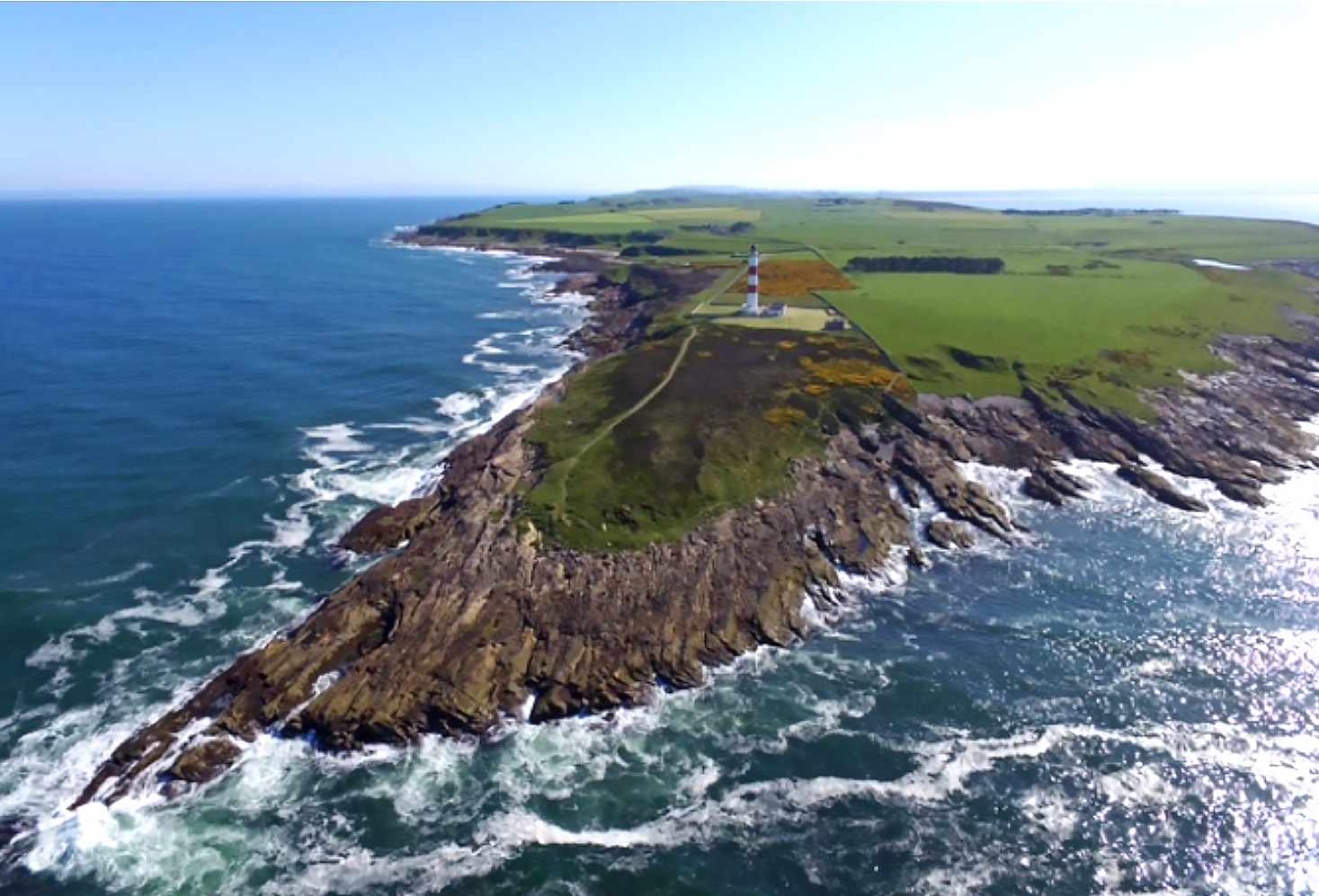
Devonian tetrapods left trackways in situ at Castlehaven, located within the Tarbat Ness Site on the Easter Ross peninsula in Northern Scotland. A cast is stored at the Oxford University Museum (sample OUM D. 790). This discovery lends credibility to 19th-century claims about the presence of vertebrate tracks in these rocks. The Tarbat Ness Site holds particular scientific interest.4
Geology Settings

The tracks were found on a single surface of the underlying layer in the Upper Old Red Sandstone (UORS) of the Orcadian Basin in northern Scotland. The Upper Old Red Sandstone appears on the Tarbat Ness–Tain peninsula and forms a narrow coastal strip.
The layer bearing the tracks belongs to aeolian deposits of sabkha (coastal plains covered with salt) in a bed of well-sorted, fine-grained sandstone approximately 15 cm thick. In Easter Ross, the fine-grained deposits exhibit olive-gray, dark gray, or black colors. This layer features wind ripples and planar laminations (thin parallel layers within the rock or sediment). A thin layer of silt (less than 1 mm) covers it. Above it lies another layer of fine-grained sandstone, about 1 cm thick.
Paleoenvironments of Devonian tetrapod trackways
Raindrop impressions extend across the surface and within the tracks, while fine mud deposits cover both the bedding plane and the impressions, giving the surface a rough texture. This indicates that the raindrop impressions appeared later than the tetrapod tracks. The preserved texture likely created due to rain combined with the adhesion of aeolian silt to the moist surface of the sabkha.
The tetrapod seemingly walked across the moist, sandy surface of the sabkha. This landscape featured semi-arid conditions with migrating dune fields, located about 100 km from the nearest sea. Ephemeral rivers flowed from the highlands to the northeast but did not reach the site of the track discovery (Marshall et al., 1996).
Regarding the paleoenvironment, it seems likely, though not certain, that the tracks were subaerial rather than underwater.
All known early tetrapods lived in riverine or coastal environments, so the finding at Castlehaven suggests that some forms adapted to harsh conditions such as dry dune fields and intermittently salt-crusted sandy sabkhas.
Age of the Tracks
The exact dating of this tetrapod track from the Upper Old Red Sandstone in Easter Ross, northern Scotland, remains unclear. According to Rogers (1990), it lies in a stratigraphic section at an elevation of about 900 m above the highest fossil-bearing layer of the Middle Old Red Sandstone. This marine fossil layer dates to the Givetian.
At the same time, Rogers notes that the Upper Old Red Sandstone, of which this sequence is a part, varies between the late Givetian and Tournaisian (early Carboniferous). However, the Upper ORS of Tarbat contains a complex of desert facies that correlate with the Givetian Middle ORS. Therefore, the track may be of Devonian age, and Rogers seems to suggest that a Givetian age is quite likely.
Characteristics of the Tracks
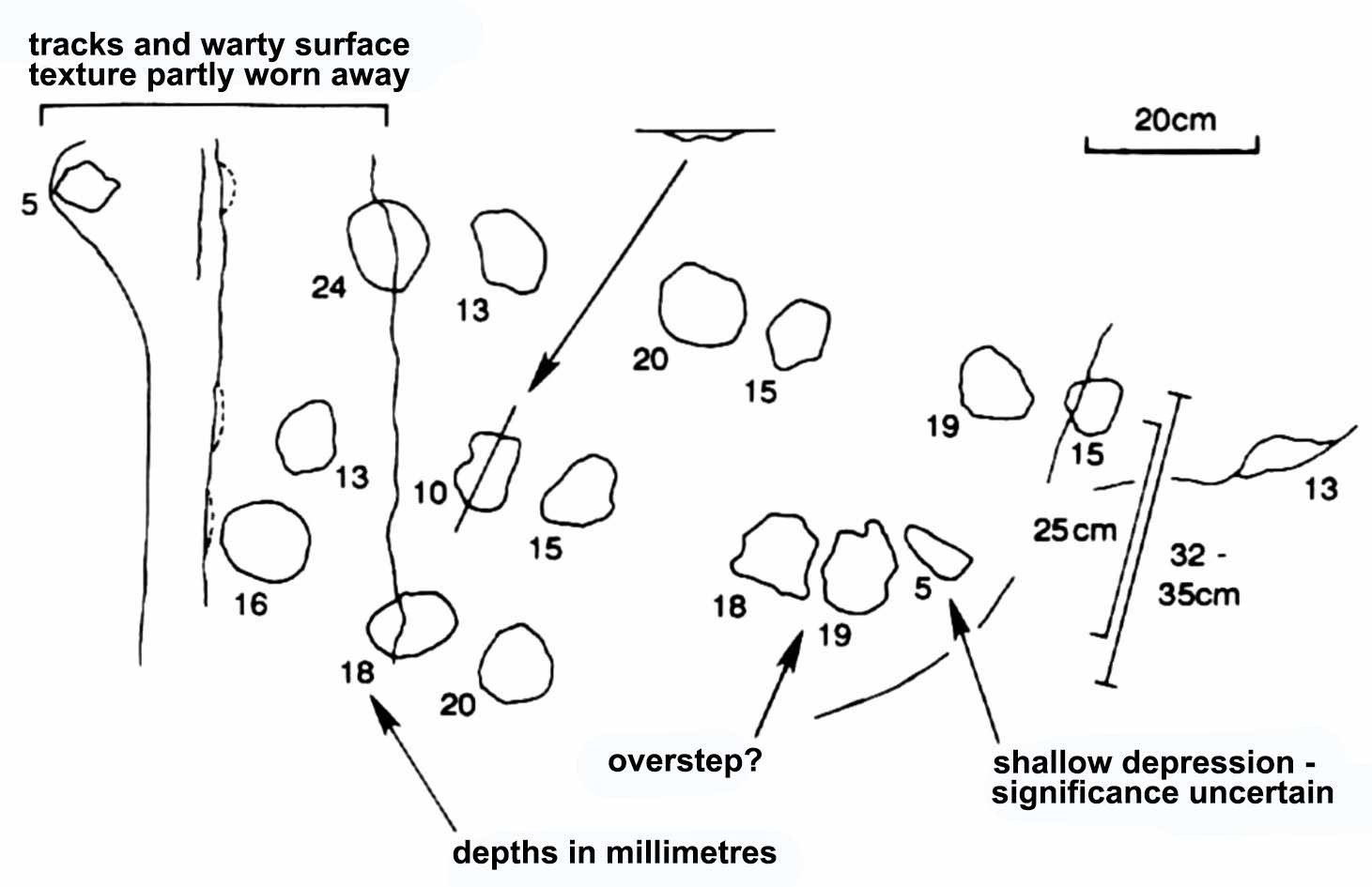
The Tarbat Ness track is short and lacks anatomical details but demonstrates a typical pattern of lateral sequence, very similar to the tracks found at Valentia Slate and Genoa River (Rogers, 1990).
This very short track contains a set of complete prints and a small fragment of another track. The track is unique because it includes raindrop impressions on the rock, which indicates that the animal left it on land.
Researchers interpret the tracks from this site as consisting of a single short sequence of alternating prints arranged in a double parallel row. Additionally, three footprints likely belong to an incomplete second track.
The prints form an alternating sequence of three steps, allowing for the differentiation of the presumed manus and pes impressions. The manus prints are significantly smaller than the pes prints.
Dimensional Parameters of Traces
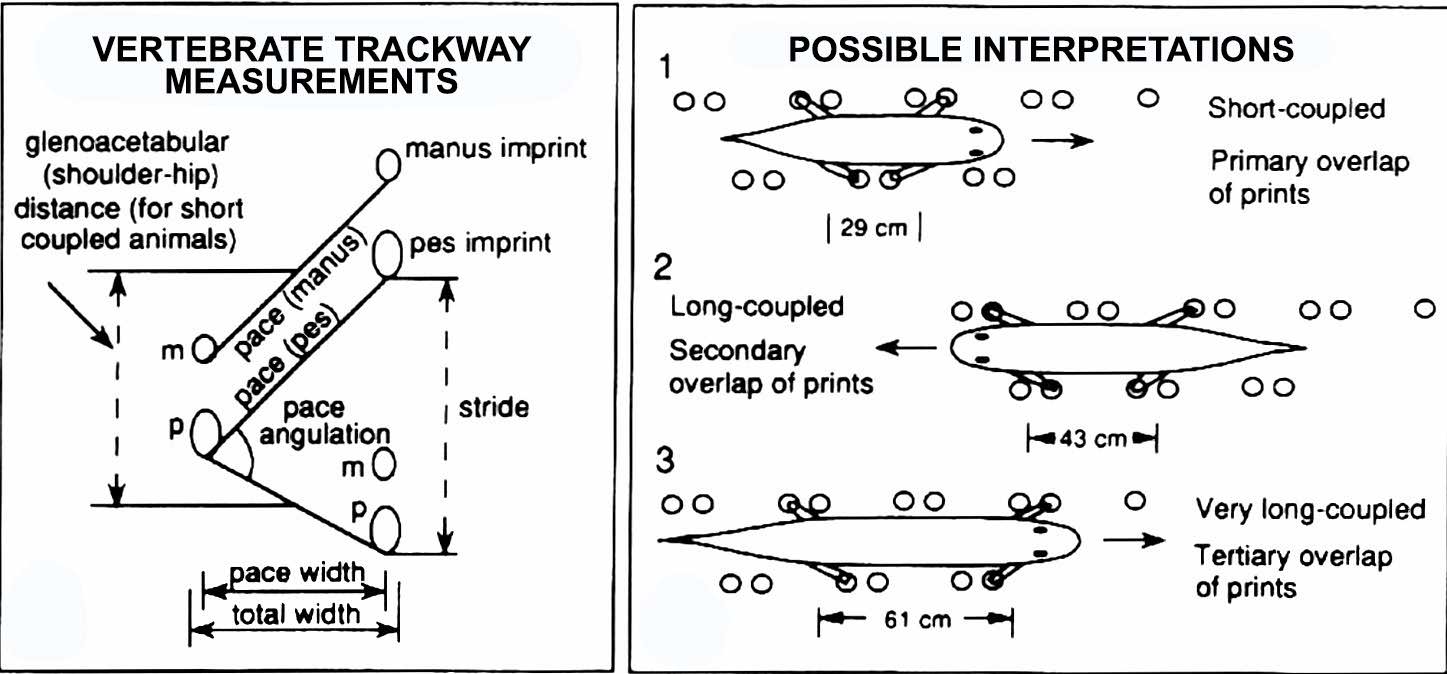
The prints appear in pairs, with an average distance of 13 cm separating each pair. The alignment of prints occurs in rows, with pairs spaced 35 cm apart. All the prints, except for one, are depressions that are roughly round and gently concave in cross-section, though they have numerous irregularities. The exception is a D-shaped print located at the right end of the central row. Next to it is an additional depression, roughly triangular in shape but only 5 mm deep.
The average depth of the prints, excluding the small depression, is 16 mm, and the average diameter is 7 cm. Two upper rows of prints run parallel, forming a single trackway. The pace measures 25 cm, and the total width varies between 32 and 35 cm. The lowest row of prints, converging with the others, appears to be part of another similar trackway.
If viewed this way, the alternating sequence of front and hind limb prints, following the typical tetrapod pattern, appears quite convincing over a series of three steps. Rogers estimates the size of individual prints to be about 100 mm in diameter, with most prints having a depth of 10 to 20 mm. The distance between the left and right prints is about 320–350 mm.
The tetrapod trackways from Castlehaven suggest a tetrapod with track dimensions similar to those found in Australia but differing in having wider prints and similar sizes for both hands and feet.
Track Shape
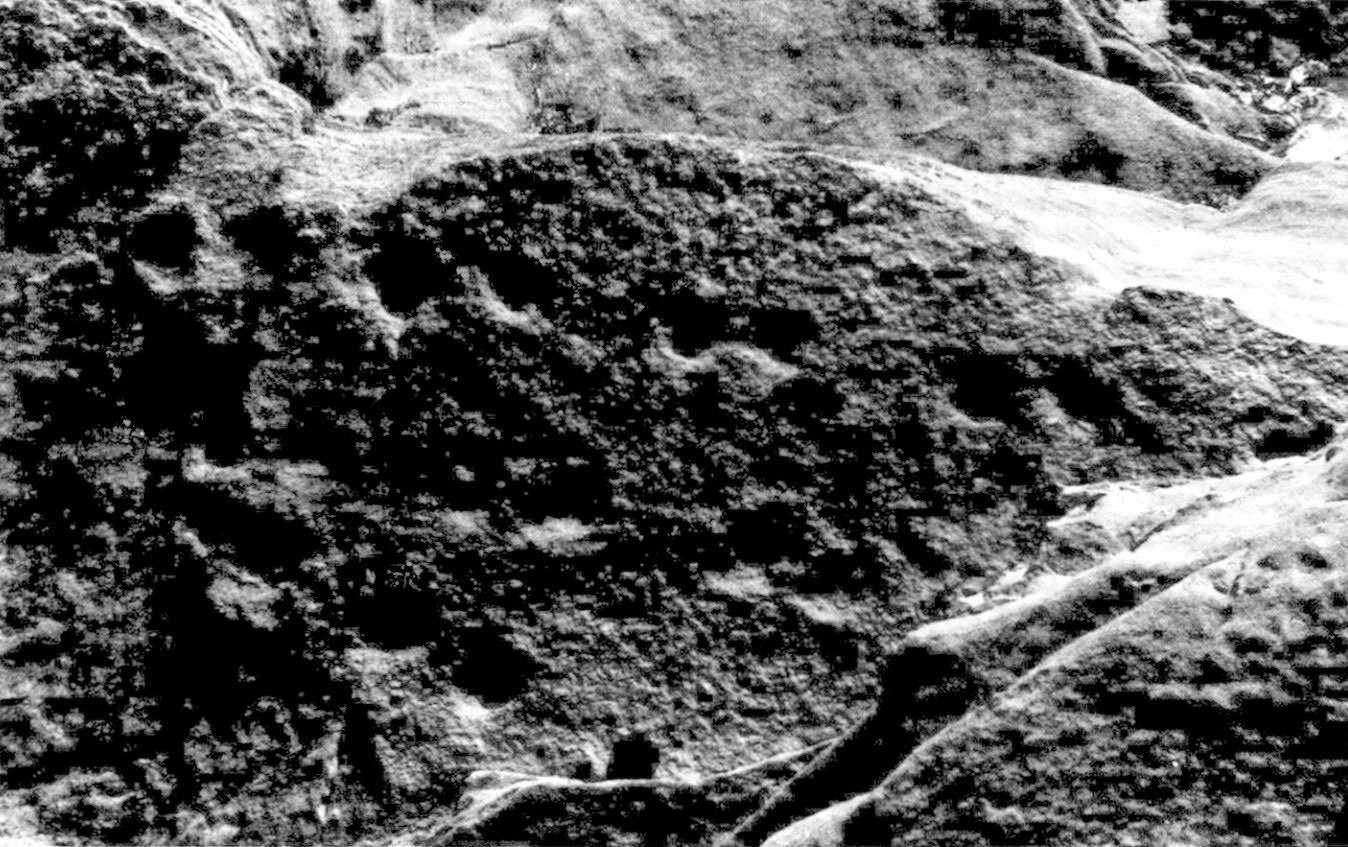
The prints suggest blunt, rounded feet with hands and feet of similar size. The exact size of the feet is unclear, considering the likelihood of alteration due to wind erosion and/or sediment deposition. The absence of a central dragging trace could be the result of these processes, or it may reflect the behavior of the animal.
The hands and feet appear to be of similar size, but on the left side of the trackway, the presumed handprints are noticeably smaller than the footprints. The estimated glenoacetabular length (from shoulder to hip) of the tetrapod that made the tracks is about 29 cm. Clack (1997) described these tetrapod tracks as “quite convincing,” although their Devonian age remains uncertain.
While this track set convincingly indicates a Devonian tetrapod, its creator, habitat, and age remain unresolved.
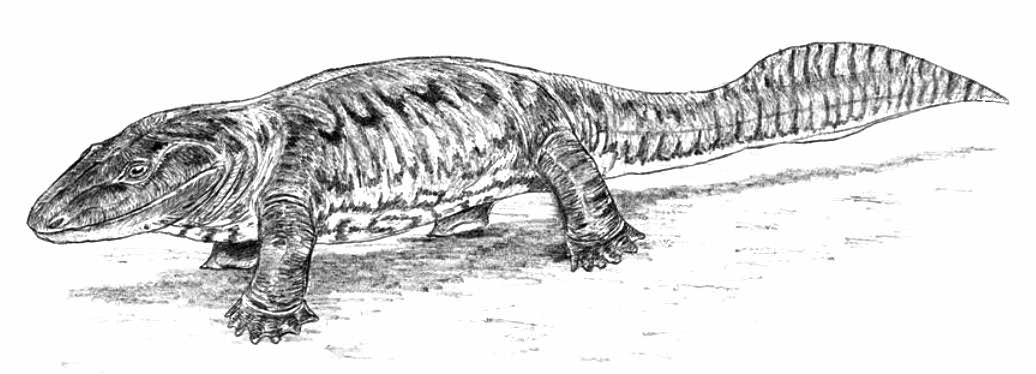
Possible Origin of Tracks: Tetrapods or Arthropods
Although the origin of the tracks is most likely from tetrapods, Rogers does not completely dismiss the possibility that arthropods may have created them, similar to the tracks found in the Grampians. The prints do not offer definitive evidence since the details of the foot structure remain indistinguishable. This lack of clarity likely stems from the coarse substrate and the potential preservation method.
Size is also not a diagnostic factor, as arthropod tracks of this scale are found in the same sequence, and in other locations, eurypterid tracks reach widths of up to 79 cm (Briggs & Rolfe, 1983).
The most convincing features suggesting a vertebrate origin are the grouping of the prints into pairs and their displacement along the path, a characteristic common in many tetrapod walking tracks (Delair & Sarjeant, 1985).
Arthropod Tracks
Researchers discovered associated ichnofauna at the same site as the tetrapod tracks, which include traces measuring 12–30 cm wide from large terrestrial arthropods, similar to those described by Friend et al. (1976).
These are parallel rows of evenly spaced prints, which in the best-preserved specimens break down into groups of three prints. This sparse subaerial ichnofauna also includes small vertical burrows with a diameter of 7 mm and plug-shaped burrows 5–7 cm in diameter within the interdune layers (Rogers, 1987). Overall, this provides insight into other inhabitants of the area.
Other Trackways
Dunrobin Castle Museum Collection
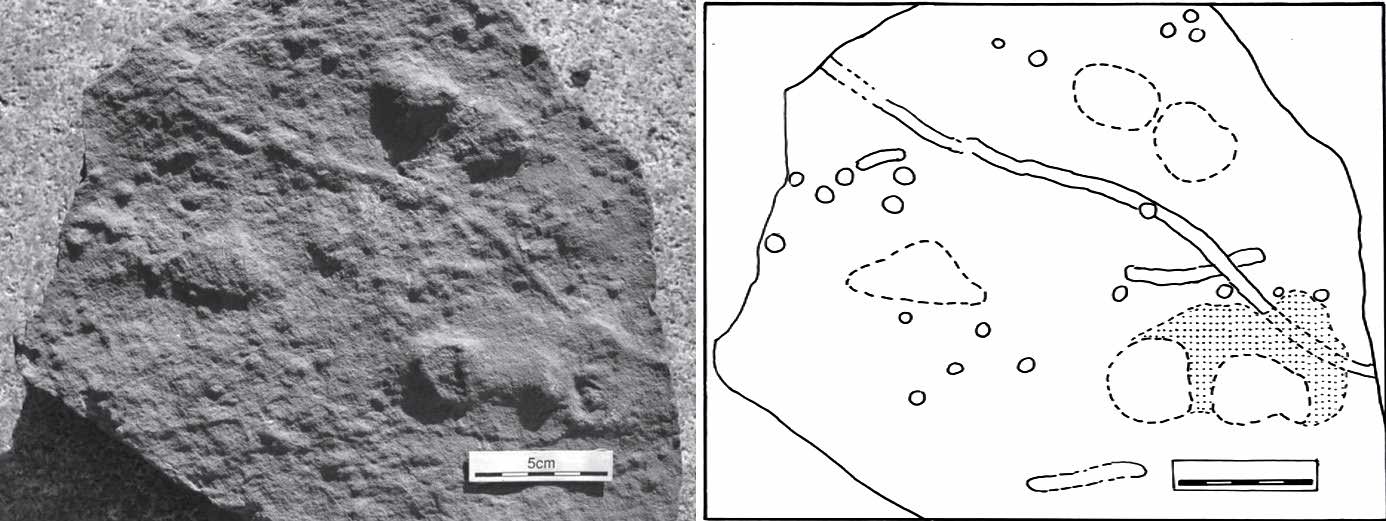
The Dunrobin Castle Museum collection in Golspie houses a specimen (DUOCM GEO457) from Tarbat Ness, east of Tain, Easter Ross, dated 1862. Previously, researchers regarded it as part of a tetrapod trackway that displayed a visible sinusoidal tail drag mark. However, further study led researchers to conclude that this likely represents a horizontal burrow created by an invertebrate.
The specimen shows a short section of the track with an external width of about 110 mm and an internal width of 60 mm, featuring three pairs of alternating prints. The inner print of each pair sits 5–10 mm closer to the midline than the outer print. The stride length is about 125 mm with a pace of 110 mm. The step angle for the inner prints is around 80°. The track exists as a preserved cast.
Individual prints are poorly preserved, and sediment infill has partially chipped off from three of them. In one pair, it appears that the prints may have overlapped. The area of distortion for each print is 20–30 mm wide. The surface of the prints is smoother than the surrounding substrate, which is uneven and dotted with numerous small, rounded raised bumps about 5 mm in diameter. Between the prints, there is a winding ridge, generally aligned with the track’s direction but not along it. These tracks probably formed in a marine tidal or lagoon environment.5
Additional Findings
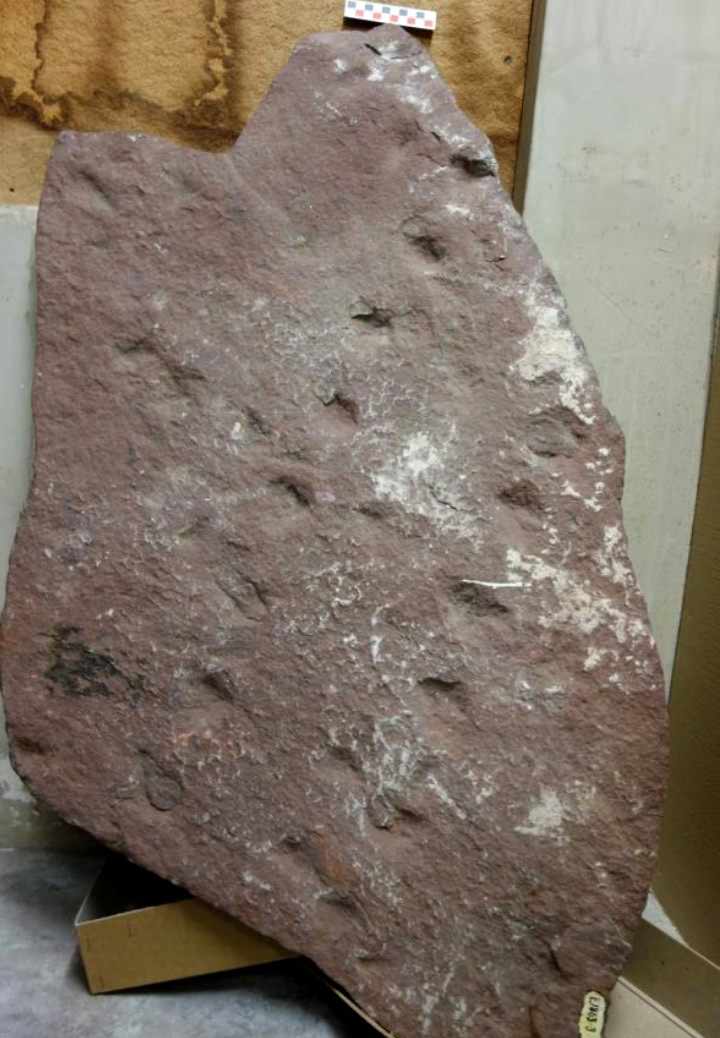
ELGNM: 1863.1. Parallel trackway created by an arthropod in ~380 Ma sandstone from Portmahomack, Tarbat Ness.
One slab with “reptile tracks” was donated by cleric George Campbell to the Elgin Museum, but its track (ELGNM 1863.3) consists of evenly spaced prints, similar to arthropod tracks that are still preserved in situ at Tarbat. A 12-legged arthropod rather than a tetrapod left these parallel footprints (Rogers, D.A. 1990).
Rogers (1987) also described a series of trace fossils from the Gaza Formation, primarily in the Castlehaven area. These include tetrapod tracks attributed to early amphibians, as well as tracks and burrows of arthropods, and layers of sediment homogenized by bioturbation. Unfortunately, there is insufficient information on this particular find.
- Stösselet al., 2016. Ichnology and depositional environments of the Middle Devonian Valentia Island tetrapod trackways, south-west Ireland. ↩︎
- Niedźwiedzki, Long, Qvarnström , King, & Ahlberg, 2017. The Middle Devonian tetrapod trackways from Valentia Island, Ireland – new observations and discoveries. ↩︎
- Stössel, 1995. The discovery of a new Devonian tetrapod trackway in SW Ireland. ↩︎
- D. A. Rogers (1990). Probable tetrapod tracks rediscovered in the Devonian of N Scotland. ↩︎
- N. H. Trewin, 2012. Historic specimen is not a tetrapod trackway with tail-drag from the Upper Old Red Sandstone of Tarbat Ness, Easter Ross, Scotland. ↩︎




